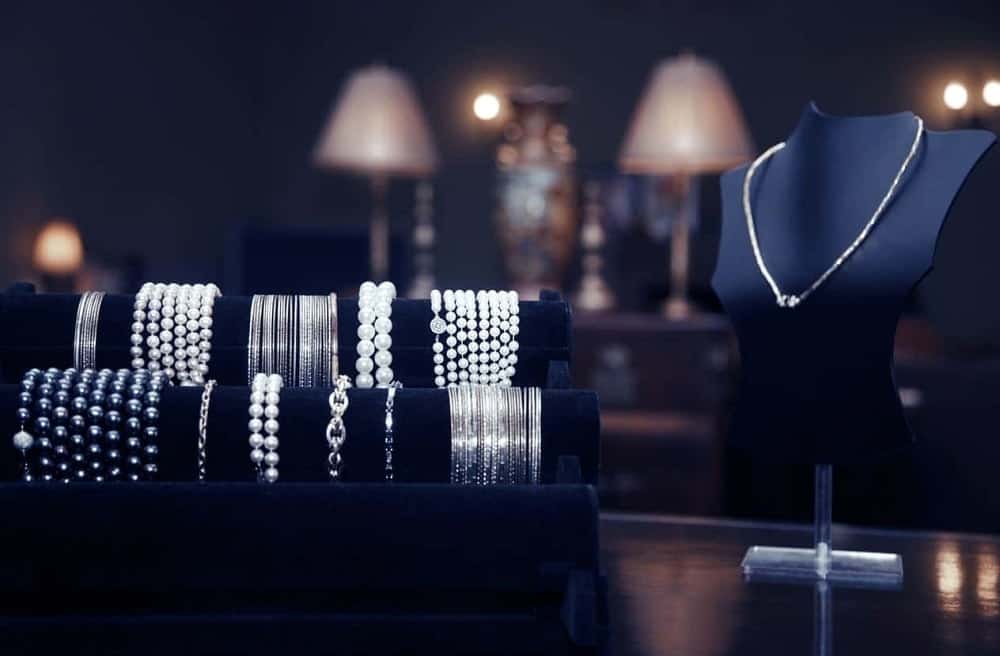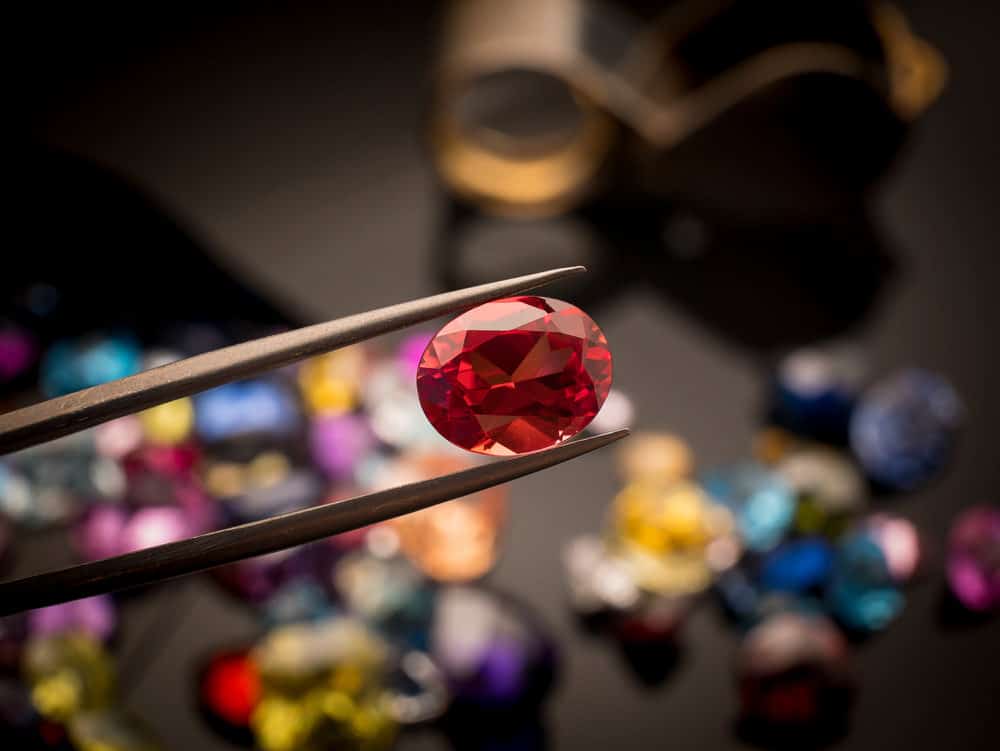Here's the ultimate list of all the different types of jewelry. We include the usual suspects but also some obscure jewelry options as well.
Of all the things that people wear, jewelry has a special significance. More than any other item you can put on, jewelry is used to show your status, convey messages and give other people information about you. After all, a single glance at your hand can tell a person if you are engaged, married or single.
Which types of jewelry have you worn…and which types should you start wearing right now?
Table of Contents
- A History of Jewelry
- The Evolution of Jewelry
- Head Jewelry
- Neck
- Hands
- Body jewelry
- Feet
- Special
- Religious jewelry
- Other
-
FAQs
- How many types of jewelry are there?
- Which types of jewelry don’t tarnish?
- How should jewelry be cleaned?
- Which types of jewelry can anyone learn to make?
- What are the different types of jewelry clasps?
- What are the different types of jewelry engraving?
- Which types of metal and stones are most commonly used to make jewelry?
- Which types of jewelry don’t rust?
- Which is correct: jewelry or jewellery?
- Can you wear jewelry through airport security?
- How do jewelry stores resize rings?
- How do jewelry appraisals work?
- Should you get jewelry insurance?
- Which jewelry turns skin green?
- How should jewelry be stored?
- Is jewelry a good investment or a bad investment?
- Which jewelry metal is the most expensive?
- Which types of jewelry can be worn in water?
- Which types of jewelry can you sweat in?
- What types of jewelry are trendy now?
- What do different jewelry markings mean?
- When is jewelry considered vintage?
- What is the most popular type of jewelry?
- Can the metal be reconditioned to make your jewelry look like new?
- What qualifies as a statement necklace?
- Is antique gold worth more?
- Are pearls still in style?
- What makes amethyst jewelry so unique?
- What are the noble metals?
A History of Jewelry
People have been adorning themselves with jewelry since the very first people lived on Earth. Even ancient people living in caves decorated their bodies with jewelry. However, they did not make their jewelry out of metal and diamonds.
The earliest jewelry ever made was designed with shells, bones, feathers and stones, items that were available.
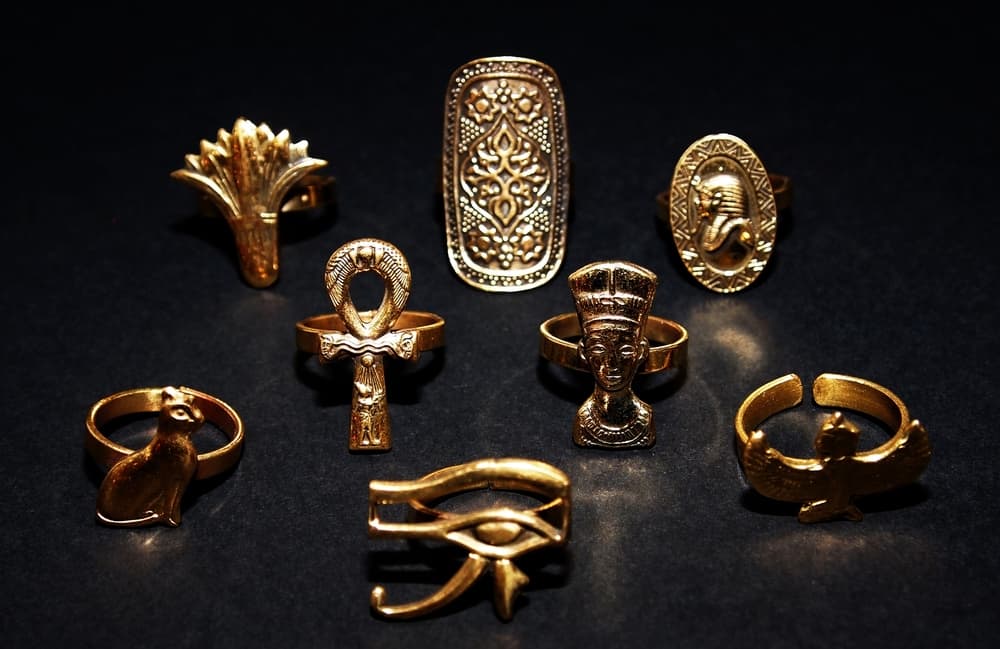
The earliest jewelry ever found is about 25,000 years old. It was a necklace made out of fish bones. Early jewelry was made from bones and teeth and other trophies that showed the wearer’s prowess as a hunter.
Humans survived by being hunters and gatherers first, so those who could be successful at these tasks had every reason to be proud and to show off their skills. Being a good hunter made a person highly valued by their community. Those who had enough materials to adorn themselves with jewelry showed others that they had status.

And from those ancient and early days, jewelry hasn’t changed so much. Sure it’s made with precious stones and metals more often than it’s made with bone, but jewelry is still used to denote someone’s worth and status. It is still used to show that a person is valued or that they have wealth enough to adorn themselves.
The Evolution of Jewelry
Jewelry has been a prominent part of human history as an important addition to the whole look. Different pieces have had huge cultural, religious and economic value attached to them, all over the world. There are a lot of different types of jewelry that work to enhance your look in many special ways.

Over time, as jewelry design became more intricate and more materials for jewelry making were discovered, many more types of jewelry were developed. Jewelry also began to take on specific meanings. In some societies, specific types of jewelry were used to ward off spirits or encourage positive, magical things to happen to the wearer.
As societies began to develop and became civilizations and then empires, jewelry was further used to show off status and wealth. Ancient rulers wore crowns, amulets and other symbols of their power. Ancient Greeks wore many types of jewelry dating as far back as 1200 B.C.E.
They adorned themselves with hairpins, rings, bracelets, earrings, necklaces and brooches. By then, jewelry had become much more sophisticated. The Greeks liked wearing fine jewelry made of gold and decorated with gemstones, just like many modern jewelry wearers.
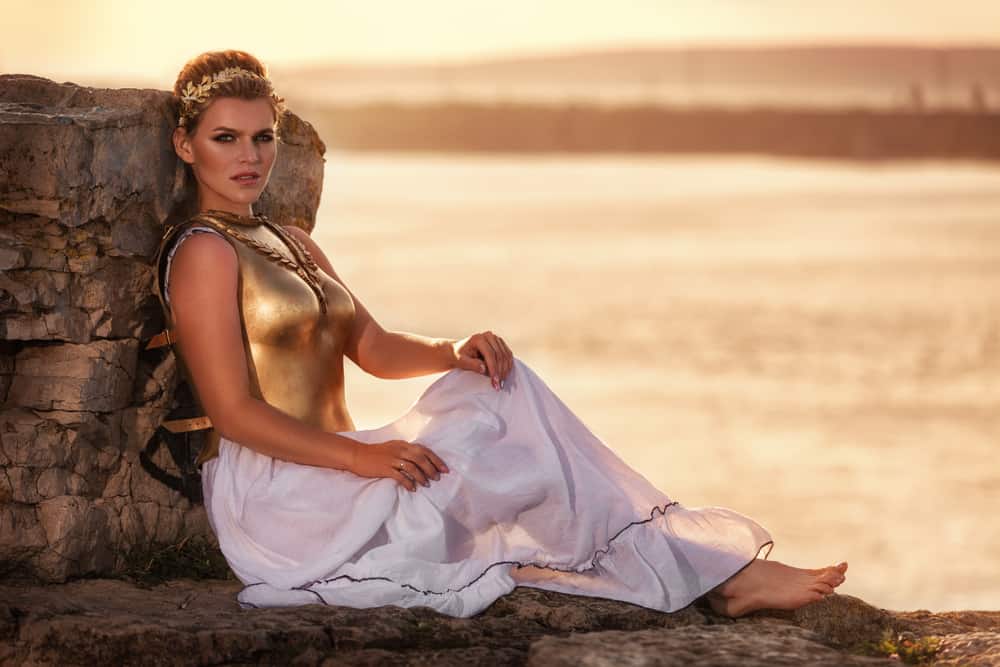
Ancient Romans favored arm and wrist jewelry, along with cameo pins. It was popular in Rome to make jewelry out of gold coins. Roman women also favored hairpins, which were so long they could actually be used as self-defense weapons.
In the Middle Ages, jewelry worn as symbols of religious prestige became more developed. This time period also saw the use of diamonds in jewelry for the first time. Before the 1300s, it was not known that rough diamonds could be cut to reveal their shiny, sparkling facets.
Once this was discovered, diamonds became a popular choice for jewelry.

In the past 25,000 years of history, jewelry has been made in a huge variety of different types and styles. Which pieces should you be using to adorn yourself?
Head Jewelry
If you’re going to adorn yourself in jewelry, start with your head. This is where most people focus their attention, so this is where you will get the most out of your ornaments.
Crowns
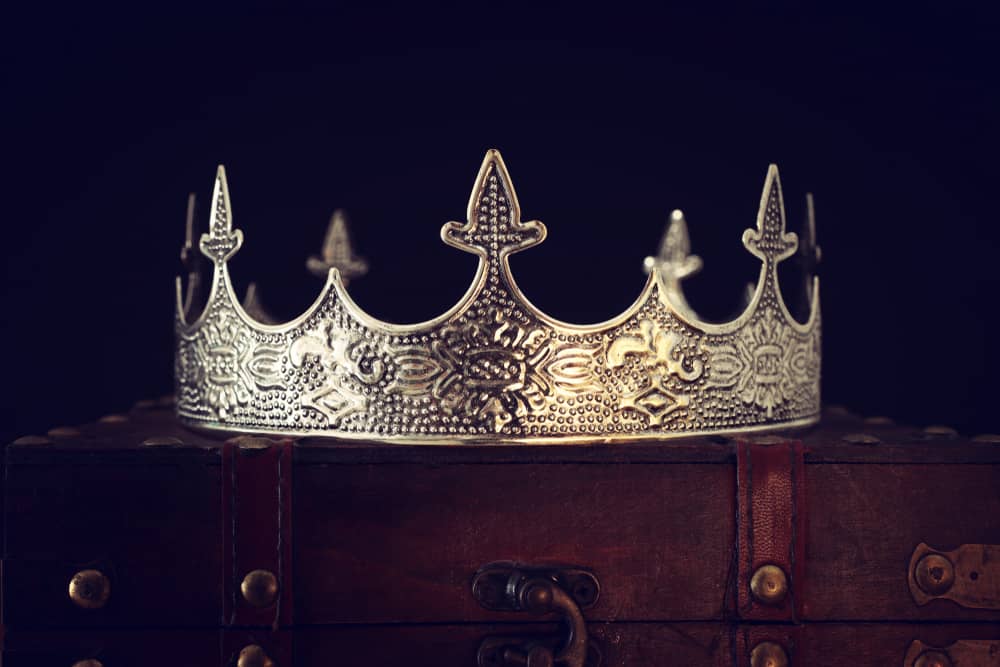
There is no way to know for certain who first wore a crown, but there is ample evidence that Egyptian pharaohs wore crowns. Their depiction of the gods also showed the gods wearing crowns. The crowns worn by Egyptian royalty connected the royals to the gods symbolically.
The oldest crowns found by archaeologists were relatively simple in design. They were mostly simple circles made from gold or silver and decorated with gemstones. However, Egyptian art shows that these crowns were also adorned with feathers that added height and embellishment to the design.
Egyptians created several different types of crowns in varying styles.
Circlets

A circlet is a jewelry piece for the head and may also be called a diadem. Circlets were traditionally used as a word for the base of the coronet or crown. They resemble open crowns that have no arches and were used by successors to the throne.
History
They have been recorded during the Greek era, where people with affluence in the community often worn them in social settings. Circlets were often known as the stephanos, which is a laurel wreath.
The word diadem comes from ancient Greek, which means “to bind around,” according to Love to Know. Diadems can also be called a fillet, which is a narrow, decorated band that encircles the hair.
Coronet
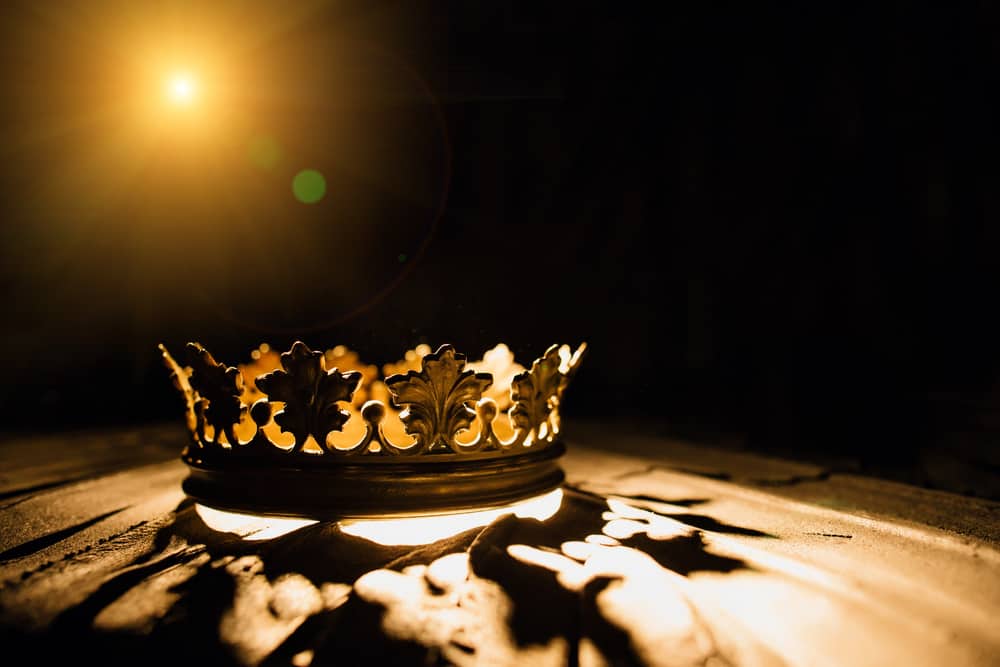
A coronet is a type of crown that is typically worn by ranks of nobility, rather than kings and queens. However, to most people, the coronet looks very much like any crown that could be worn by royals. It’s a circular head ornament, usually made of gold, embellished with pearls and leaf designs.
In Britain, the type of design used to embellish the coronet denotes the rank of the wearer. For example, a duke’s coronet will have eight strawberry leaves, according to Encyclopedia Britannica.
Tiara
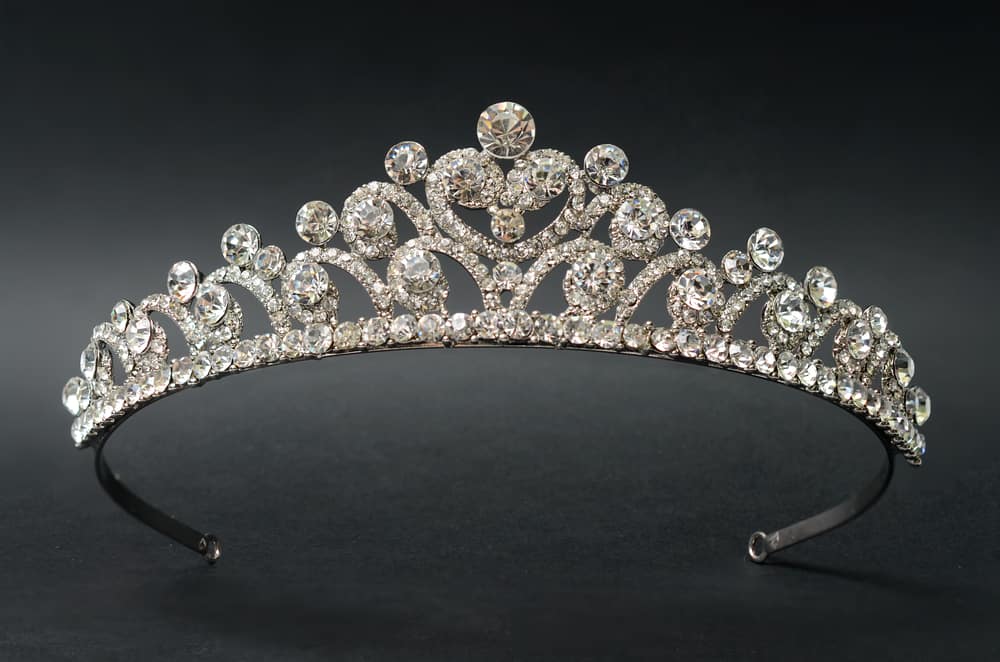
The tiara design is attributed to Persian kings. A tiara is a circle that has at least one high peak. However, there are many different styles of tiaras.
The bandeau tiara is an old-fashioned design that has experienced a recent resurgence in popularity. It functions a bit like a highly stylized headband, with a thick front section that is heavily decorated, usually diamond-encrusted. It is usually a uniform height all the way across, or tapers just slightly down from a central point.
The bandeau is an open design that fits across the top of the head. It can be worn as low as the forehead or sit higher back.
One of the most famous tiara styles is the kokoshnik, the Russian style of tiara that has seen a resurgence in popularity in the modern era. This is traditional Russian head jewelry that sits on the head and rests high on the forehead. This style had a broad design that tapers from a central point at the center top.
This tapering design is made with diamond-set bars or a continuous chevron shape. This tiara style is very popular with the British royal family.
A tiara is traditionally worn by women as ornamental jewelry. They are worn only on formal occasions where the dress code is white tie. In ancient times, they were worn to signify high status, especially during the Persian era, where they were worn by kings.
Tiaras are a significant part of British history. Queen Elizabeth II is known to have the biggest and most valuable collection of tiaras in history. Tiaras have always been associated with royalty but are now often worn at formal events and parties by non-royals as well.
Earrings
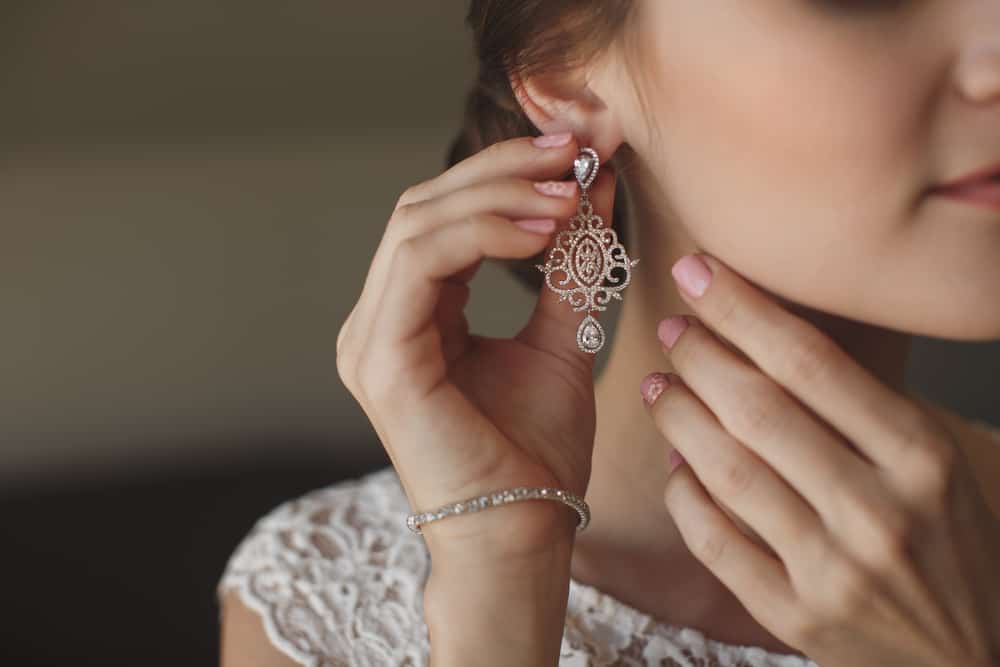
Earrings have been a thing since the Bronze Age. The oldest evidence of earrings ever found is about 5,000 years old. Hoop earrings were a popular style as far back as 4,000 years ago.
Persian soldiers wore them as talismans of protection during battle. These ancient earrings were typically made of gold and decorated with gemstones. Earrings were so popular in Egypt, they were even worn by cats.
King Tut had many holes for earrings in his ears and Cleopatra wore a pair of pearl earrings.
History
In the 1900s, earring styles became more modern than ever with the invention of clip-on and screwback designs. This allowed people without pierced ears to wear earrings. Piercing skin fell out of fashion in the early 1900s. By the 1940s, it wasn’t a common practice for women to get their ears pierced.
That all changed thanks to Queen Elizabeth II. She had received a pair of diamond earrings as a wedding present in 1947 and had her ears pieces so she could wear them. Pierced ears grew in popularity after that and now, it’s common for even children to have pierced ears.
Style
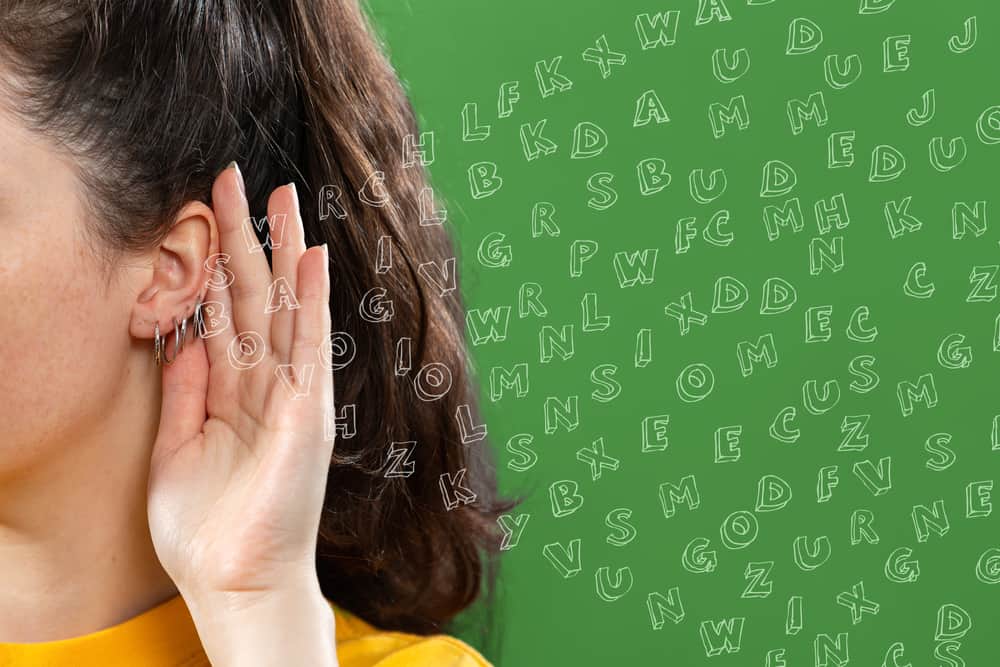
Earrings are commonly attached to the earlobe via a piercing but are also attached to other parts of the ear. They come in all sorts of designs like studs, drop, hoop, dangle, barbell, ear threads, ear spikes and huggy earrings.
Ear cuffs

Ear cuffs are a type of earrings worn on the upper part of the ear, rather than the lobe. An ear cuff attaches to the outer rim of the ear and may also be attached to the ear through a piercing in the lobe. Ear cuffs can be made in simple to highly elaborate designs.
Hairpins
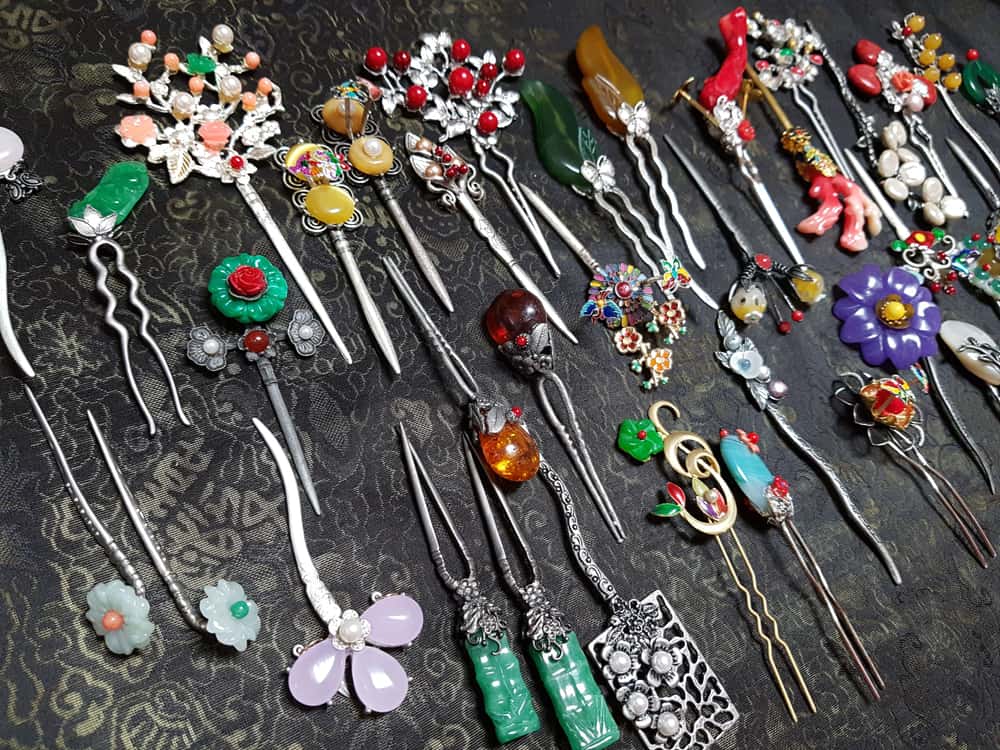
Hairpins were also worn in ancient days. Hairpins have been made from just about every material imaginable, including ivory, wood and copper. Hairpins became incredibly elaborate in the 1600s and continued to evolve.
Today, hairpins may be simple bobby pins or incredibly elaborate, expensive pieces of jewelry adorned with big gemstones.
History
Hairpins were considered luxury objects during the Egyptian, Greek and Roman civilizations. They became really popular in 1901 after Ernest Godward invented the spiral hairpin. They are used to hold complex hairstyles together and can be encrusted with ornaments and jewels.
Modern versions are usually made with different lengths of wires so that they can hold the hair in many different styles.
Hair rings

Hair rings, little bands of metal used to hold pieces of hair, date to at least the Bronze Age. Hair rings were made from solid gold or clay, bronze or lead that was gold-plated. Ancient Egyptians wore hair rings made of pottery, alabaster or jasper.
These metal hair rings were sort of the great-great-grandmothers of fabric hair bands, like scrunchies, that became popular in the modern age.
Hatpins
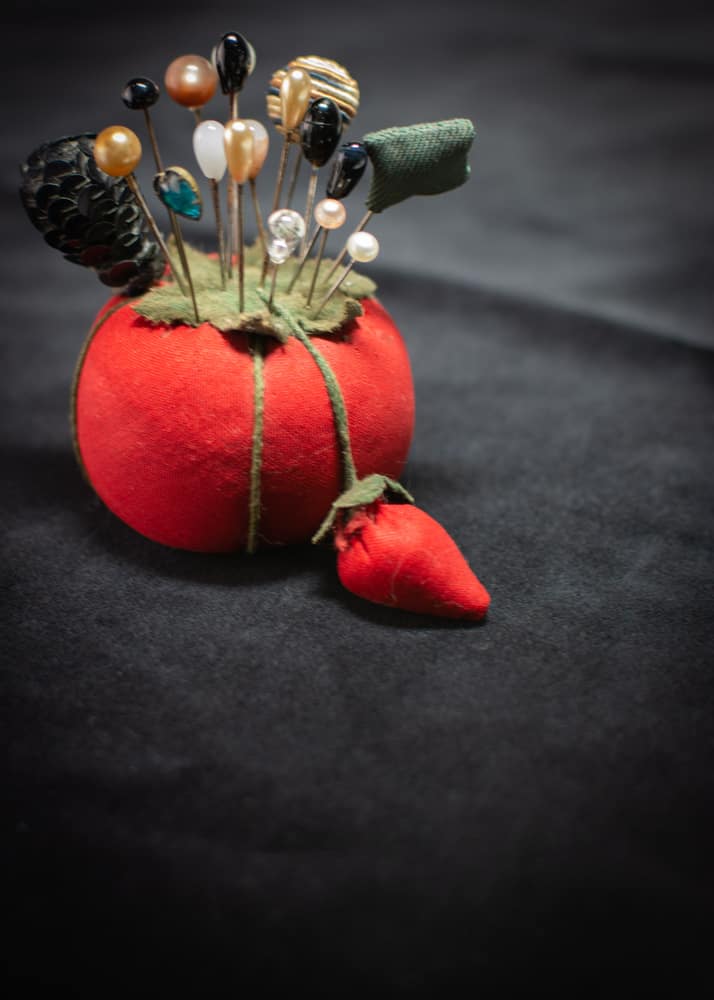
Hatpins date to at least the 1400s. They were worn throughout Europe at this time by women to hold veils and head coverings in place. Hatpins were small and wiry at this time and through most of the Middle Ages.
More decorative and bejeweled hatpins became popular in the 1800s.
Changing the language
In the early 1800s, hatpins became a coveted accessory. The sales of these pins were strictly regulated by British Parliament, which deemed that pins could only be sold on January 1 and 2. Women saved money all year to purchase pins at this time.
This is where the phrase “pin money” is believed to have originated, according to the American Hatpin Society.
Fashioning a weapon
Machined hairpins became possible in the late 1800s. Hairstyles and hats became even more elaborate and as a result, hairpins became longer and much fancier. Women learned that in a pinch, hatpins made spectacular weapons against unwanted advances from men.
Jadanagam
Jadanagam, a piece of jewelry that became popular in South India, literally means “hair serpent.” It is a jeweled headpiece that decorates braided hair. It’s an incredibly elaborate jeweled piece that is often decorated with diamonds, rubies and other precious gems.
Sarpech

The sarpach, also known as an aigrette or a shirpej, was worn thousands of years ago to decorate the turbans of princes in the Middle East. Royal women began wearing these intricate head ornaments as tiaras. Sarpachs were elaborate bands of gold worn around the front of the head (or turban) and detailed with gems.
Shinka
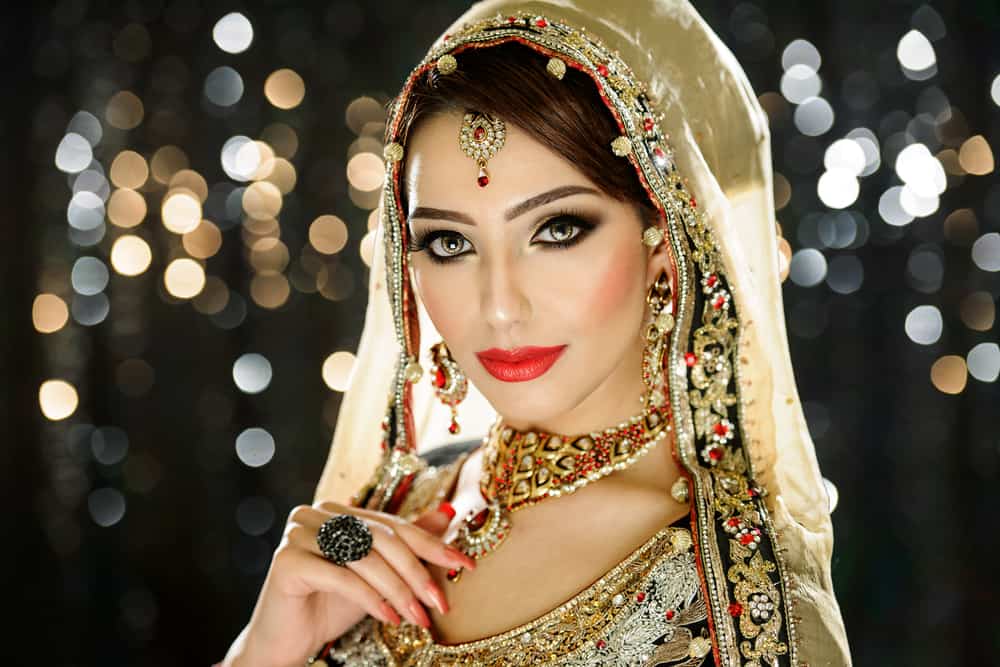
An ancient head decoration, the shinka is a traditional Indian piece of hair jewelry that fastens to the front of the head with gold hooks. The shinka is a heavy piece made of gold chains and other embellishments, such as stylized animals and gemstones. This is still seen in modern India as a hair decoration for newly-married women.
Neck
The neck is a natural place to display jewelry. Necklaces are one of the first types of jewelry ever invented and they have evolved into dozens and dozens of different shapes and styles throughout history.
Chokers
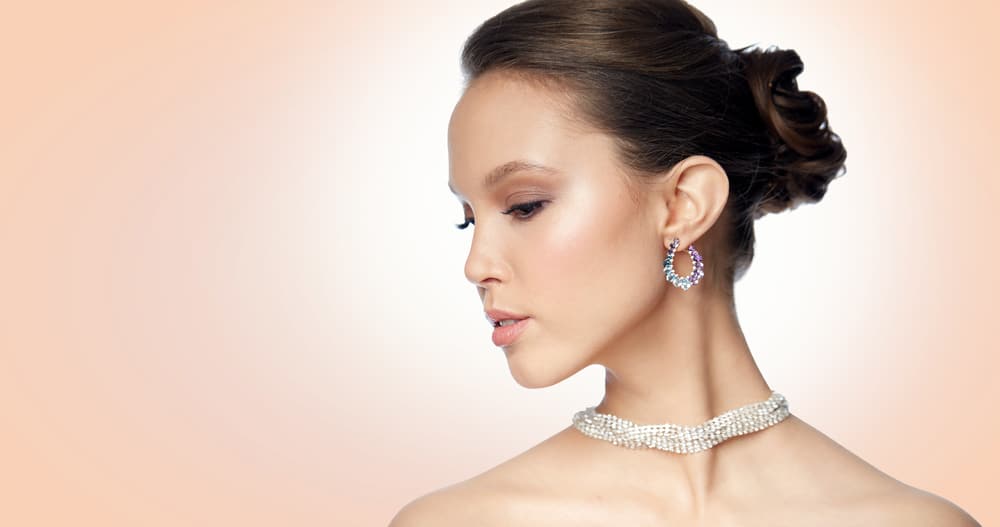
Choker necklaces feel like they’ve been a part of fashion for ever. Princess Diana was famous for her chokers and many other fashion icons have put on these short necklaces. This piece of jewelry has a surprisingly long history.
History
Ancient civilizations, including Egyptian and Mesopotamian societies, believed that chokers contained special powers. A choker could protect the wearer’s neck from all sorts of evils. These ancient chokers were commonly made of gold and decorated with lapis.
Queen Alexandra of Denmark, who was Queen of England right after Victoria, popularized choker-wearing in the early 1900s. The wide chokers she wore were called dog collar necklaces, which was intended as an insult to her fashion sense. However, Alexandra wore this style often no matter how much she was mocked because she had a scar on her neck she wanted to keep covered.
Style
Chokers can be made of many different materials like plastic, velvet, beads, metal, latex, base metal and precious metals.
They were first crafted in 2500 B.C.E. by Sumerian artisans and have been around for thousands of years. Red chokers were also worn by women after the French Revolution to pay homage to the elites who were killed by guillotines.
Nowadays, they are worn by popular celebrities including Kendall Jenner, Beyonce, Poppy Delevingne and members of BTS.
Necklaces
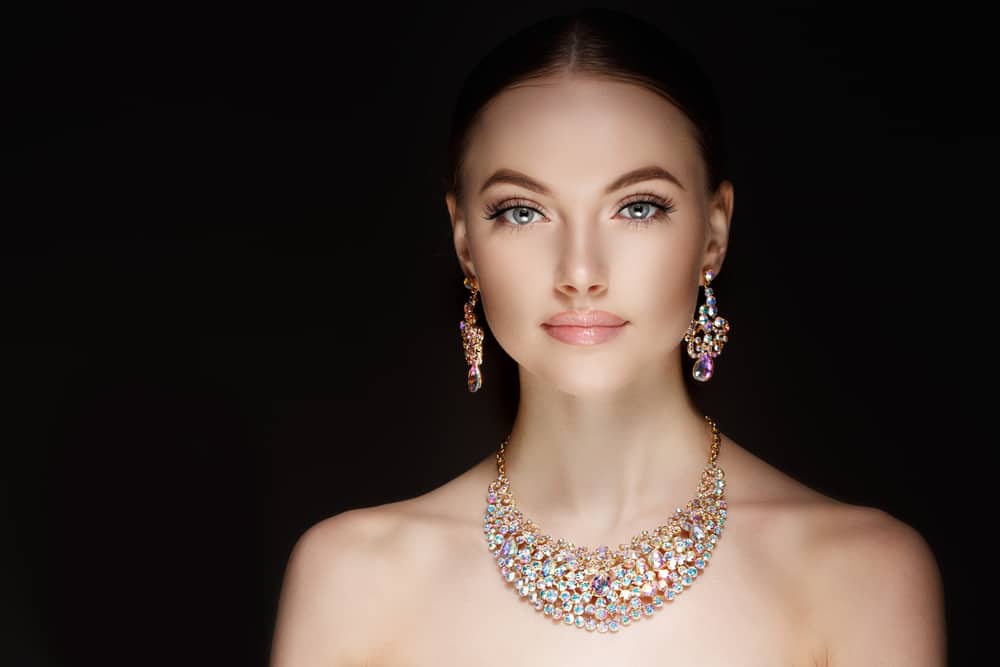
Necklaces are one of the oldest known types of jewelry. Early necklaces were made of bones, teeth and materials gathered from hunting. In the Bronze Age, metal necklaces became far more popular, according to Did You Know Fashion.
Style
Chain necklaces are extremely trendy and they’ve become a style staple. Many celebs, recording artists, star athletes and trendsetters have worn chain necklaces. There are many different types of these necklaces that have their own distinct features if you know what to look for.
- Bead chain necklaces, also known as ball chain necklaces, are small balls that are linked together with small, evenly spaced rods.
- Cable chain necklaces are made with perfectly circular rings in an alternating interlocking pattern. The rings are locked together in a pattern where a flat-facing ring interlocks with a ring that is perpendicular to the flat-facing ring. You end up with a pattern that goes flat-facing ring, turned ring, flat-facing ring, turned ring and so on.
- Curb chain necklaces are made with interlocking rings that are oval and flat in shape. These rings may be any size, but the interlocking pattern is always the same. It’s a tight pattern where all the rings are the same throughout. They are all oriented the same way to create a uniform look.
- Figaro chain necklaces are made in a very distinct pattern. This chain necklace is made up of links in two different sizes. The pattern is a long, oblong link followed b three short, circular links, then another long link and so on.
- Mariner chain necklaces, also called anchor chain necklaces, were inspired by the chains used on ships. Each link is an oval with a vertical bar bisecting the middle. The links are intertwined.
- Rope chain looks like rope. Bands of gold are twisted together to create a ropelike look. These chains come in all thicknesses.
- Snake chain necklaces are made in a smooth design that looks solid. However, this chain is designed to be highly flexible. That’s because it’s actually made up of many smaller links.
- Wheat chain necklaces, also known as spiga chain necklaces, are made in a braided pattern that does resemble heads of wheat.
Pendant styles became popular in the Middle Ages. With the invention of photography, locket necklaces became popular in the 1800s.
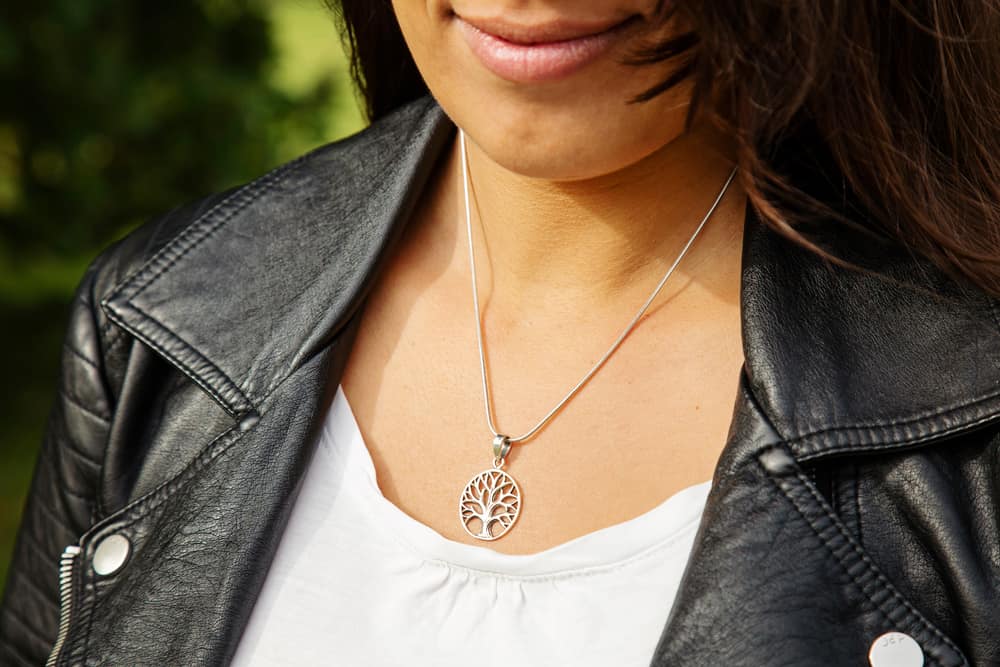
A medallion necklace is a type of pendant necklace where the pendant is a medal. This can be anything, from a religious symbol to a decorative element.
History
Necklaces have traditionally served funerary, magical, religious and ceremonial purposes throughout time and were often used as a symbol of status and wealth. They come with amulets, crosses, lockets, pendants, precious stones and many other attachments.
Torc
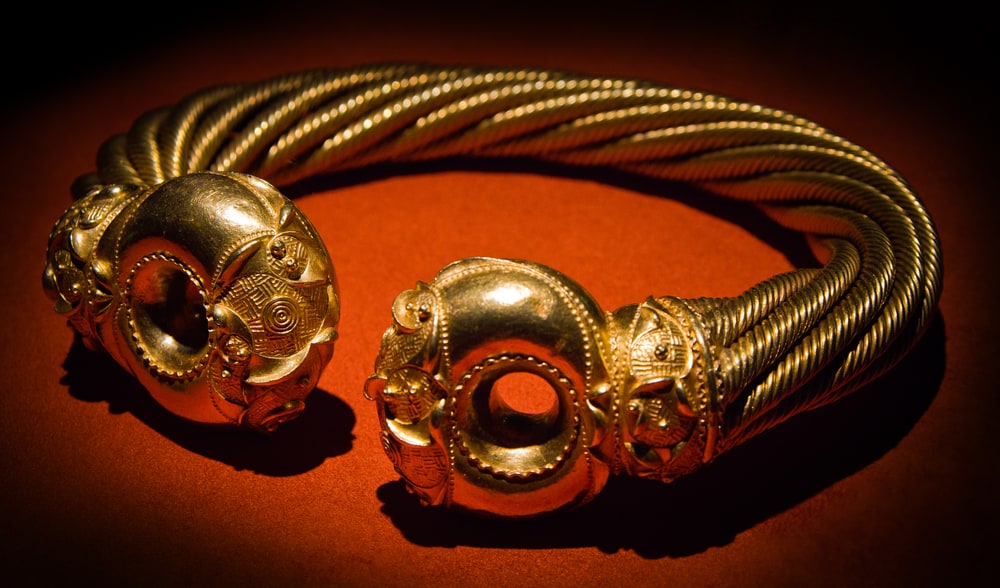
Torc necklaces are thousands of years old, originating among Celtic cultures in Europe. Made from bronze, silver, gold and copper, torcs were often fashioned with twisted bands of metal. They were made in open collar designs with two terminals at each end.
Torcs fit close around the back of the neck. They were popular among Celtic warriors and probably had spiritual significance, according to World History.
Arms
Arms have been used to display jewelry for thousands of years. In fact, many types of jewelry you’ve worn on your arms were probably inspired by designs that were first invented back in the Bronze Age.
Armlet

Armlets are like bracelets for the upper arm. They’re worn above the elbow and they’ve been used as jewelry for thousands of years. Armlets are still worn as jewelry to this day. They are generally made of metal in intricate designs, often with a particular theme or motif.
Bangle
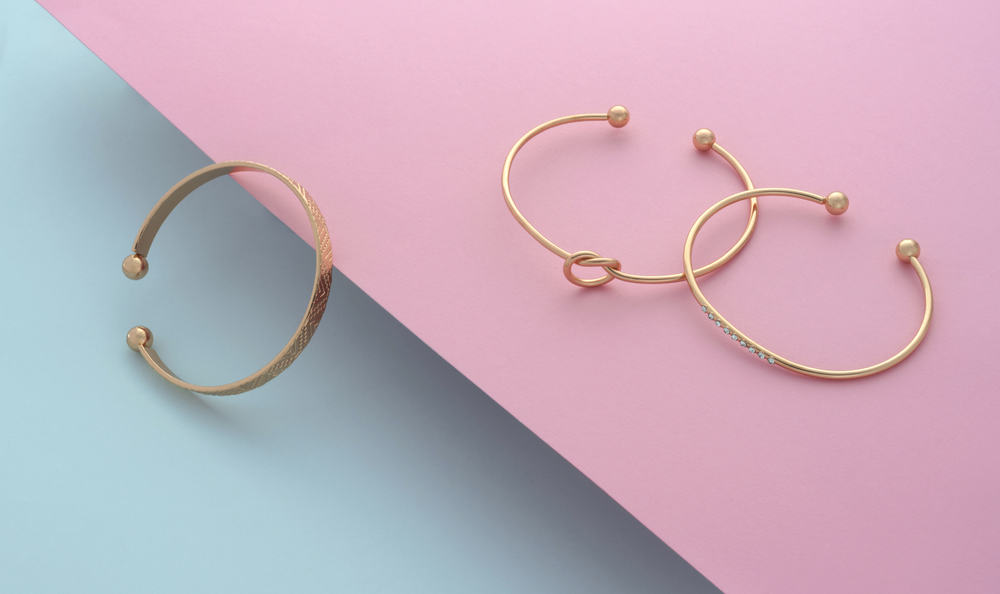
Bangles have been worn in India since ancient times. The word itself comes from the Hindi bangri or bangali. One of the oldest artifacts ever found in India is a figurine of a woman wearing bangles.
They have taken on special cultural significance in India. It’s a must-have accessory for married women because bangles are considered to be good luck charms.
Bangle colors and materials have special meanings. For example, white bangles are a symbol for new beginnings, according to Sanskrit Magazine.
Bangles are rigid bracelets that have no closures. They’re made with an open design that slides around the wrist.
Bracelet
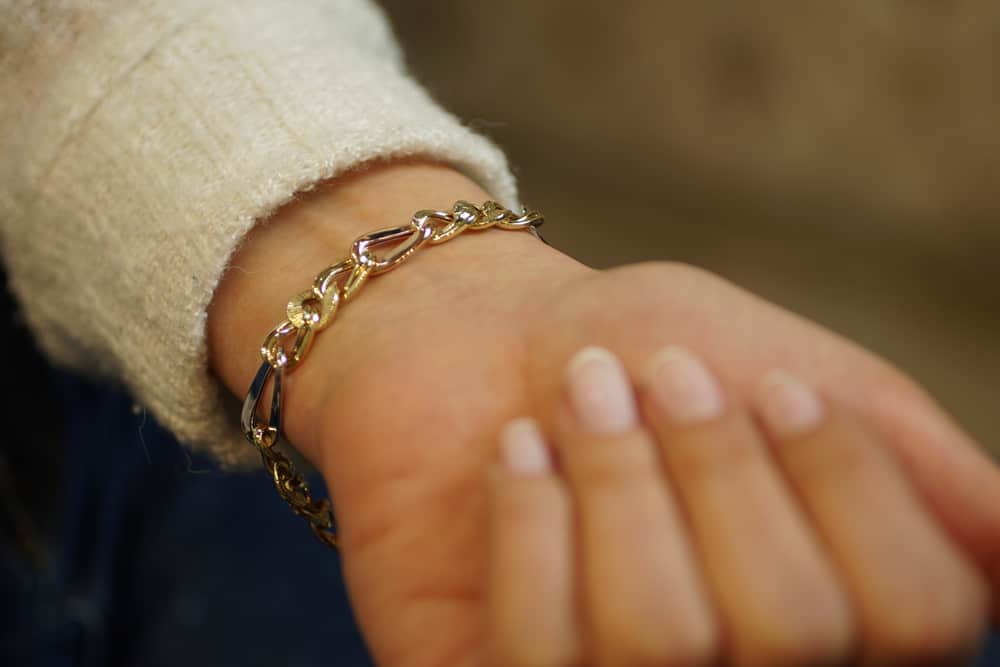
Bracelets, circular ornaments for the wrists and ankles, are one of the oldest jewelry types. Throughout history, they’ve been made with a huge variety of materials. Base metal and precious metal is used quite often of course, but wood, tortoiseshell, enamel, plastic and many others have also been used.
Horns, bones and gems have all been used to craft bracelets as well.
Bracelet evolution
Over time, bracelets have been made in many different styles. Charm bracelets, bangles and many other types of bracelets have been worn over the years. Bracelets may be stiff or highly flexible.
History
For certain cultures at specific points in history, bracelets have held special meaning. Timor, an island in Indonesia, places special significance on bracelets. A person’s bracelets alone can show marital status, social standing and even certain life events.
The term “bracelet” is derived from the Greek word “brachile” which means of the arm. Bracelets are worn around the wrist and may serve different uses. Many types of bracelets are used as ornaments, identification, decoration, religious or cultural significance, and many more, depending on the different cultures around the world.
They can contain charms, crystals, metal, plastic hoops, pearls, rocks, jewels, wood and many other materials.
Cuff links
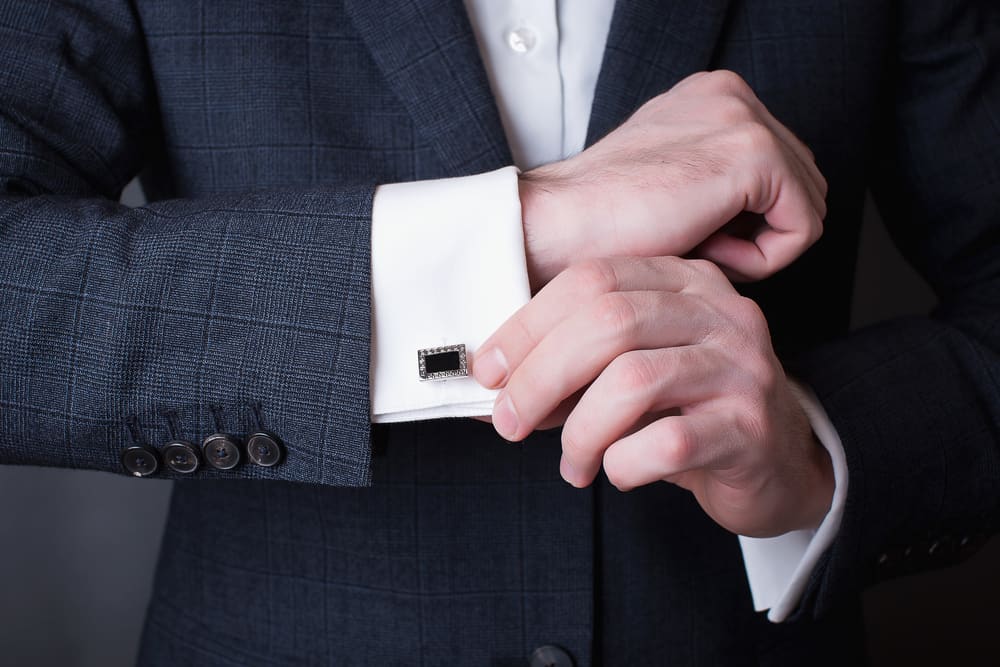
Cuff links, or cufflinks, are a little detail that can really make a big difference. Cufflinks are much more modern than many of the other jewelry types on this list. They didn’t even get their beginnings until the early 1500s, when ruffled wristbands were added to shirts.
In the 1700s, this evolved into small chains with what was then called sleeve buttons. Later, this design became cuff links as we know them today.
Literary history
“The Count of Monte Cristo,” written by Alexander Dumas, is credited with popularizing the cufflink. In the book, a character wears big diamonds on the cuffs of his shirt and causes everyone else to feel envy. The description caught the eye of fashionable tailors, who realized that such an embellishment could be a marketable product.
Gems on clips and rods were made and sold in huge numbers…and a fashion trend was born.
Modern links
On many styles of shirts, buttons are included on the cuffs. This eliminates the need for cufflinks. However, cufflinks are still used for many types of dress shirts and they’re considered a must for formal wear.
They’re made in a huge variety of designs and themes, from fun and casual styles to high-end and luxurious designs. They can be made from leather, wood, glass, metal, glass and many other materials.
Hands
Jewelry for the hands is as old as humankind itself. The earliest hunter-gatherers wore jewelry on their hands that, in many ways, is a lot like what humans wear today.
Rings
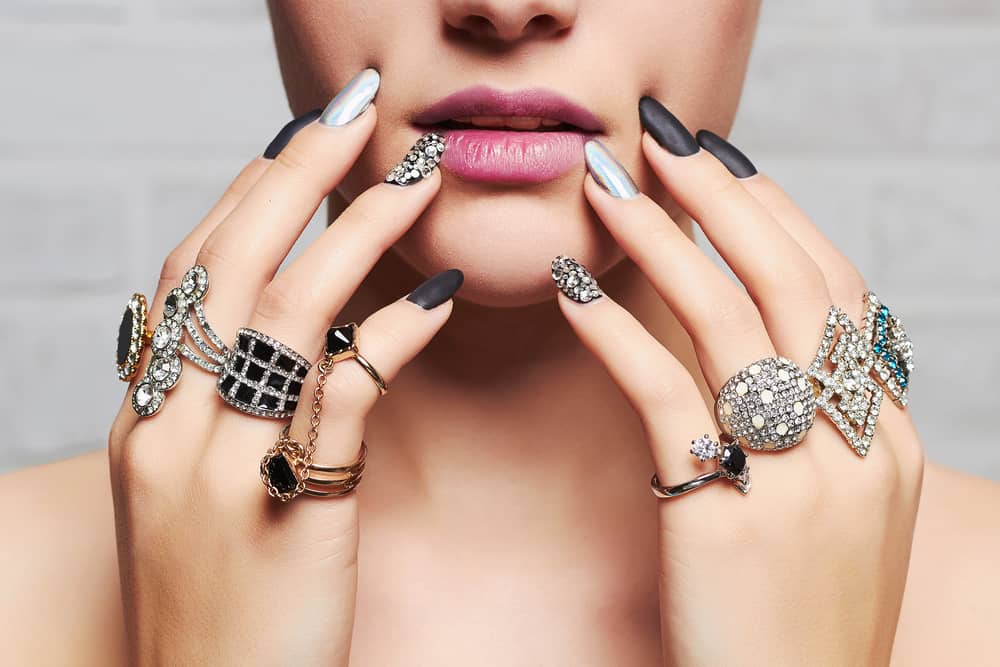
Rings worn around the fingers date back to the earliest days of humans. But because the earliest rings were made out of bones, shells and other organic materials, few ancient rings survived to be found by archaeologists. The earliest rings ever found date to ancient Mesopotamia, about 5,000 years ago.
History
The oldest knowns style of ring is the signet ring. The earliest signet rings were used as a signature, a distinctive symbol that authenticated a document as belonging to the owner of the symbol on the ring.
The stone was considered an essential element of the ring in ancient Rome. It was Rome that originated the betrothal ring, known more commonly as the engagement ring, which was given by a future husband to a woman as a pledge of commitment.
Types of rings
Over time, rings that are used to mark special occasions or life events have been designed. Wedding and engagement rings are common symbols of commitment, but there are many other types of rings used to mark important milestones and/or convey specific meanings.
Championship rings are worn by sports teams to commemorate important victories. Today, championship rings are awarded across many different sports. The very first championship rings were created for the Montreal Hockey Club to celebrate their 1893 championship, according to Sports Illustrated.
These first championship rings were simple bands that looked more like wedding rings than championship rings as they are designed today. A more elaborate design was seen in 1922 when the New York Giants received rings to celebrate their World Series win. These rings had a single diamond in the center and a broad, decorated design that more closely resembles modern championship rings.
Now, championship rings are given yearly to award many important sporting events.
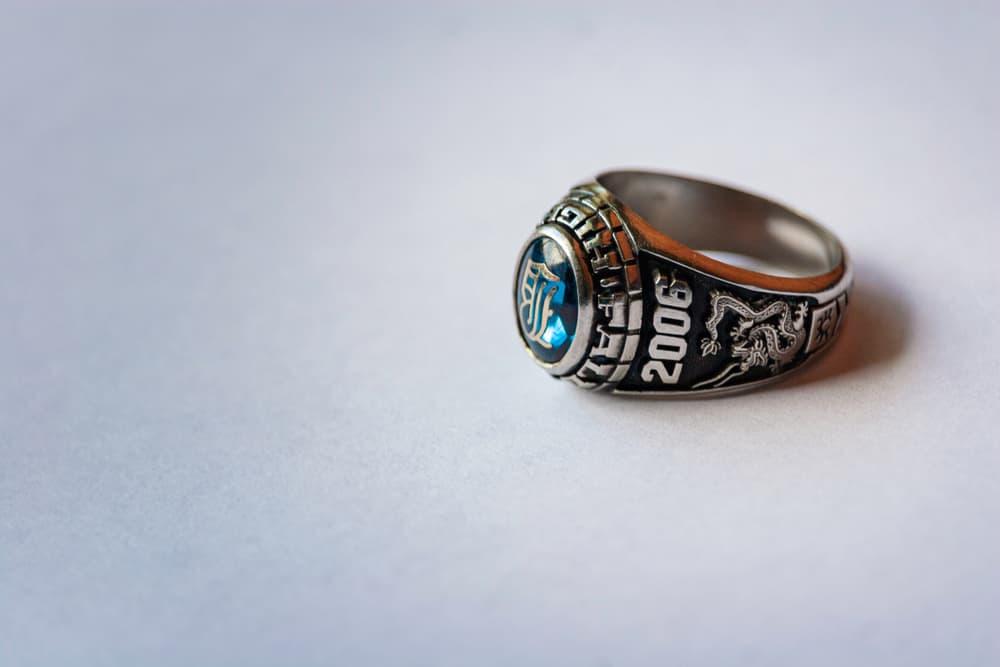
Class rings were issued by military academies in the 1800s, given to graduating students to mark their time in school.
Promise rings are given as a symbol of a romantic commitment. It symbolizes exclusivity but it’s not quite as serious as an engagement ring. Some people consider promise rings a pre-engagement ring, according to the Knot.
Wedding rings actually have their origins in ancient Egypt. The Egyptians believed that the vein of love ran directly from the fourth finger of the left hand straight to the heart. This is why they wore wedding rings on this finger.
The circle is endless, which signifies the union between the couple. Greeks and Romans both adopted the Egyptian culture and spread the concept of wedding rings around the world.
Hathphool

Hathphool translates to “flowers for the hand.” It is also called the panchangala. This is an elaborate piece of hand jewelry that is made up of a bracelet that has chains that go up the back of the hand and connect to five rings on each finger.
Each one of the rings has a different flower motif. On the thumb is a small mirror. The hathphool is made of precious stones and gold in an intricate, glittering design.
Slave bracelet
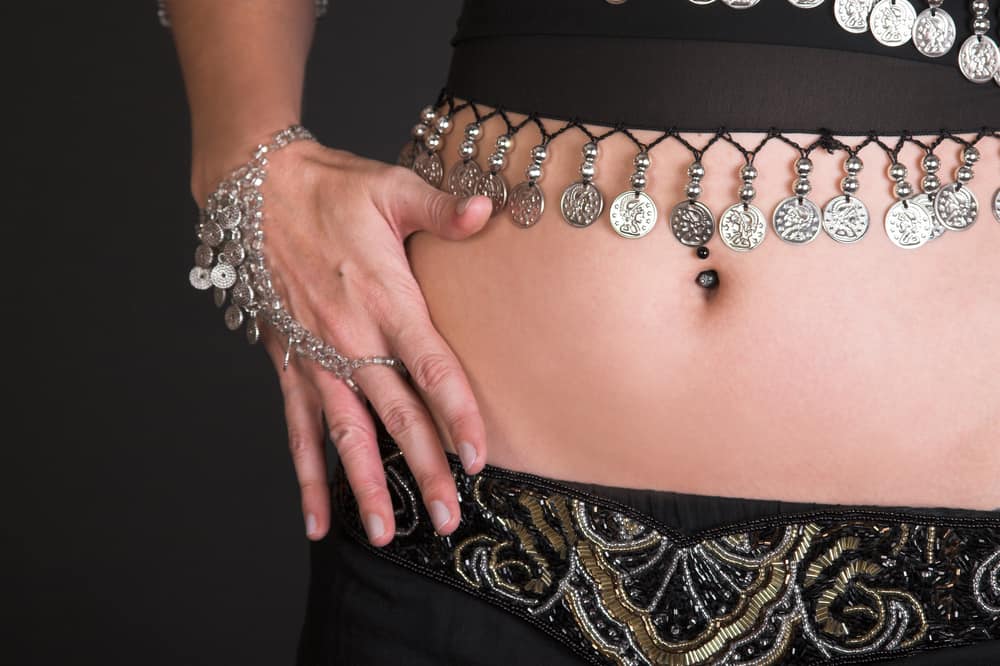
The name of the slave bracelet is extremely unsettling. This is mostly a slang name for a style that is also known as a belly dancer bracelet and a harem bracelet, though its more proper name is the hath panja bracelet. This is a type of bracelet that is connected to a ring with a chain, according to Refinery29.
History
It’s unknown when the unsavory term for this bracelet was first used but the design is at least 1,500 years old. The design is not outdated, as this style is still worn today, but the name is definitely ready to be changed for the modern era.
Body jewelry
Sliding rings on hands or bracelets on wrists is pretty straightforward, and it makes sense that these types of jewelry were invented first. But there are lots of places to display your jewelry style on your body. Humans have been experimenting with ways to wear jewelry since prehistoric days.
Have you got any piercings in common with ancient cave dwellers?
Belly chain
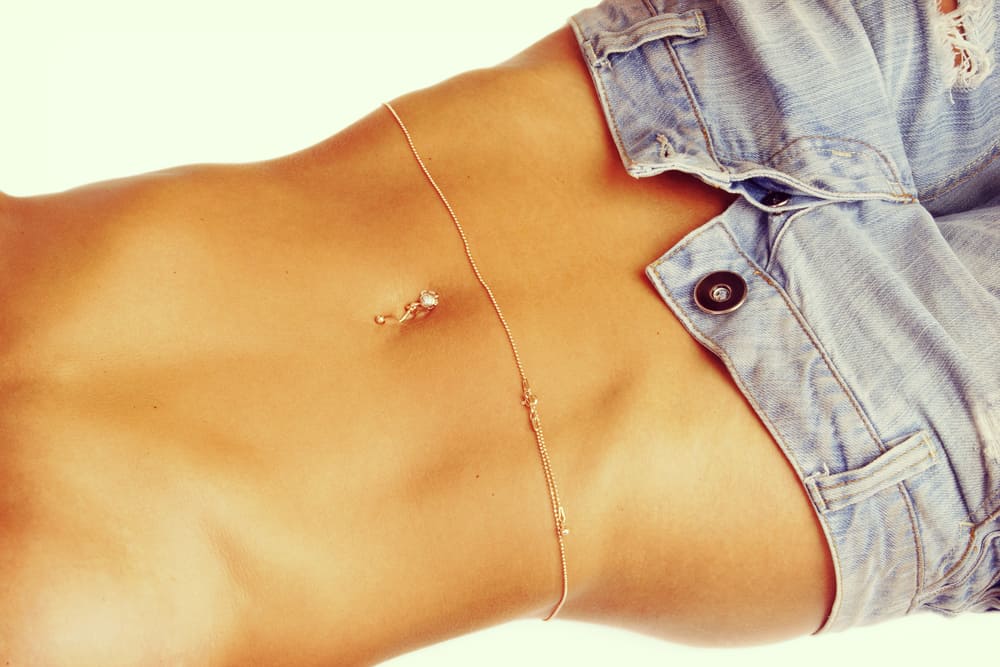
The belly chain is an Indian body ornament that has gained notice around the world. This chain is wrapped around the waist. It’s a very popular decoration for brides. Belly chains are usually made from silver or gold.
History
The tradition of wearing belly chains in India has been around for at least 4,000 years. But this is not just a decoration. The belly chain is typically worn for important ceremonies and religious festivals, which means it is a highly-valued item.
Also known as waist chains, they were traditionally called the “Kamarband/Udiyanam.” They can also be attached to navel piercings and are usually made of gold or silver.
Body piercings

Various parts of the body can be pierced with hoops, rods, studs and other types of jewelry. You’re probably familiar with nose rings, eyebrow rings and lip rings. Belly buttons are another body part that is commonly pierced.
Some people have tongue rings, which are bars that go through the tongue. They’re held in place with balls at either end. Other, more personal, parts of the body may also be pierced, including nipples and genitalia.
History of body piercing
Ears have fleshy lobes at the bottom. These lobes do not have veins and they are mostly just skin. Even so, piercing this part of the body hurts!
So what’s the point of taking this to another level and piercing far more sensitive areas of the body?
Intentionally putting holes in the body for the sake of having a place to put jewelry is at least 5,300 years old. This is the age of the oldest mummy ever found, so far, according to All That is Interesting. This mummy had pierced ears. Almost 2,000 years later, King Tut of Egypt also got his ears pierced.
Julius Caesar also wore earrings another 1,000 years after Tut reigned in Egypt.
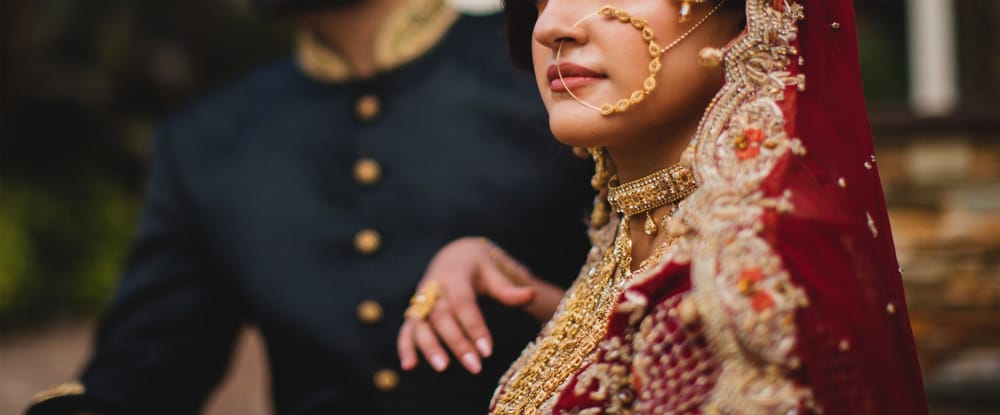
The practice of piercing noses is also an ancient custom. It was recorded in the Bible that Abraham gave a woman a nose ring upon choosing her to marry his son. Giving a bride a golden nose ring is still a common practice in the Middle East and North Africa.
The size of the ring shows how wealthy the groom’s family is. If the wife is later rejected by her husband, she can use the gold ring to provide for herself financially. In this tradition, the piercing goes through the nostril of the nose.
Another nose piercing custom, septum piercing, is an ancient tradition that was seen among warrior cultures. Ancient Native American tribes, including the Aztecs and the Incans, pierced their septums and wore bejeweled ornaments here as symbols to honor the gods. The Aztecs also used tongue piercings as part of a ritual sacrifice.
Nose piercings have become really common. They are most commonly associated with Indian culture. They have been worn in the region for over 5,000 years.
Bengali and Nepali women also wear septum nose jewels as a symbol of marriage. They are also popular among Native American communities and were worn by leaders of the Shawnee tribe. Septum piercings have recently gained a lot of popularity among the general public.
They are worn between the nostrils on the dividing wall. Septum rings are now making a comeback in fashion and have been seen being on popular celebrities like Rihanna, Zendaya, Zoe Kravitz, Madonna and many others.
Piercing other parts of the body, including nipples and genitalia, also has ancient origins. Such piercings were worn in ancient Greece and Rome. However, in some cases, piercings were used to prevent sexual activity among enslaved peoples.
Brooch

The brooch is considered to be a classic and it has taken on many different styles and looks over the years. Brooches can be big or small, simple or ornate. And though they’ve been part of the fashion scene for a long time, you may be surprised to know how old this jewelry really is.
History
Brooches as we know them were inspired by the clasp used in ancient Rome. This was a safety pin-like device. From this, more ornate jewelry developed and became brooches.
They spread throughout the Roman Empire and became incredibly popular in Europe, where they were used to pin cloaks closed at the neck, according to Encyclopedia Britannica.
The earliest record of brooches was in the Bronze Age, when they became tools to identify the chronological order of history. In the Victorian Era, they became a symbol of mourning and became keepsakes of the loved ones left behind by a departed soul. Alongside rings, brooches have become the most common form of family heirlooms that are passed down through generations.
Style
Brooch styles can take many forms, including membership pins given to those who are part of certain groups. The Girl Scouts of America and many other groups provide members with pins.
Chatelaine

Unlike many other jewelry types on this list, chatelaines are not really worn anymore. This is a piece of jewelry made up of several dangling chains that are secured to a belt. The chains have little hooks at the ends of them to allow the wearer to hang keys, watches, purses, scissors and other implements.
History
It’s unknown precisely when the chatelaine was created but the word itself is derived from the French for “lady of the castle.” The lady of the castle was the keeper of the keys to the castle, which is why the jewelry has this name. And despite being derived from a word used for ladies, chatelaines were worn by both men and women (printable ring size chart for women and men).
The chatelaines were particularly useful for women during the Victorian Era when the styles of the day did not allow for easily accessible pockets in women’s clothing. They continued to be popular until the 1900s when clothing styles started to become much more practical and handbags became a more widely-used fashion accessory. This gave women more practical ways to carry needed items.
Feet
What’s the point of having feet unless you’re using them to display jewelry? Well, maybe foot jewelry isn’t for everyone but it has played a pretty big part in jewelry history over the years. Certain pieces of foot jewelry have very special meaning and can even convey information about the person wearing the jewelry.
After this, you will look at foot jewelry differently than you ever did before.
Anklets

Anklets are bracelets made specifically to go around the ankle. They’ve been around since at least 5,000 B.C.E. when they were worn in ancient Sumer. Anklets continued to be popular in the Middle East through the ages, with many different styles being developed over the years.
Anklets are still worn today.
History
On the surface, anklets seem pretty straightforward. Like bracelets and necklaces, they are adornments that are circular in shape and worn around a specific part of the body. But the history of anklets is a little bit more complicated.
Some have speculated that among Middle Eastern cultures, anklets had a special meaning or somehow conveyed a message that the woman wearing the anklet was available for sexual transactions.
Style
Anklets have been worn by women for decades in India, where they are known as payals. They hold strong importance in the culture, which is why they are used during Indian weddings and are paired with saris. They have also been documented in pre-dynastic times in ancient Egypt.
Foot harness jewelry pieces are a combination of anklets and toe rings. They begin at the ankle, adorn the foot, and end in a toe ring. They are commonly used by Indian brides.
Toe rings
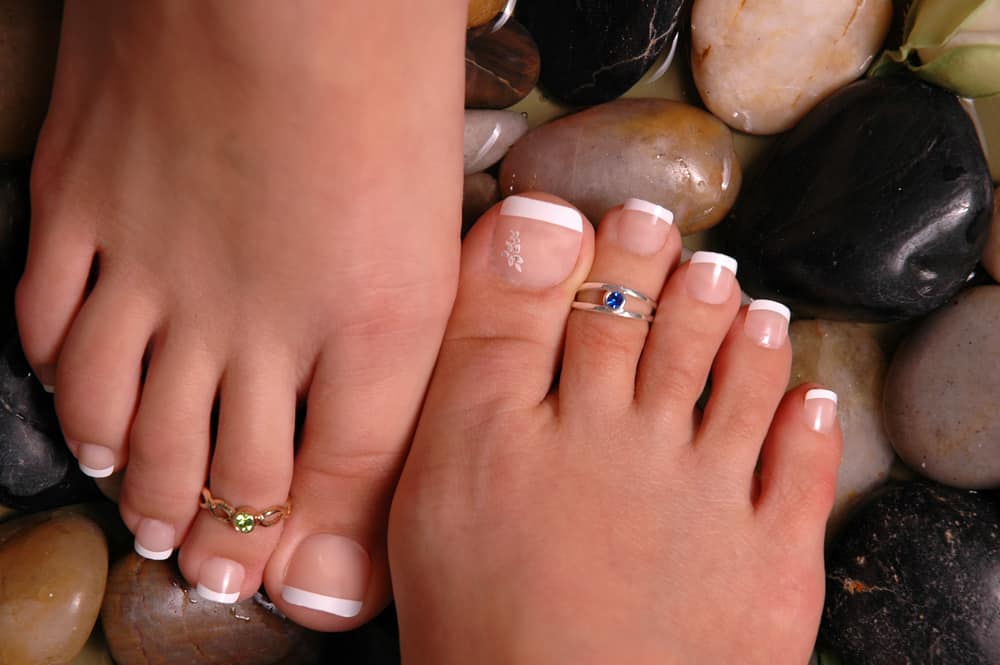
Toe rings are not seen a great deal in European and U.S. fashion, but they are pretty much a must-have in India. Hindi women wear them as a symbol that they’re married. Toe rings are called bichwa in India.
Style
In India, toe rings are usually made in silver and they’re worn in pairs, one for each foot. Some women wear three or four toe rings on one foot. Toe rings are highly embellished.
Also, they are typically made in open, adjustable designs that can be taken on and off toes.
Elsewhere in the world, toe rings are worn as fashion jewelry. They were trendy in the 1990s and they’ve become a fad again more recently.
Special
All pieces of jewelry carry some meaning and many pieces have specific symbolism, such as wedding rings. But there are some types of jewelry that aren’t as commonly seen that carry special meaning or serve some special purpose. These types of jewelry aren’t about style, they’re about meaning.
Amulet
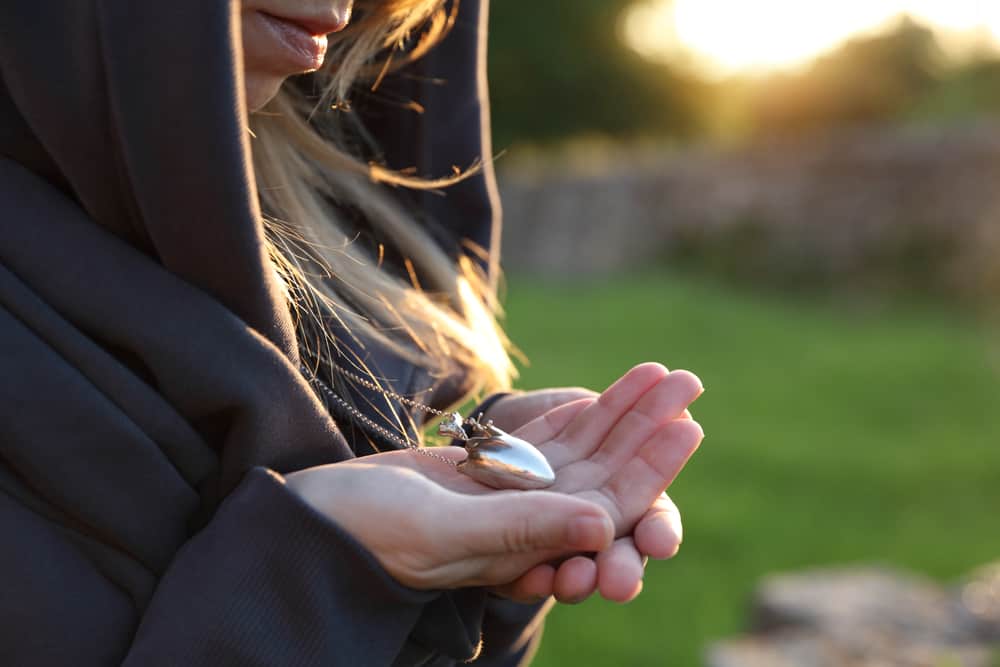
Also known as a talisman, an amulet is meant to bring luck, good fortune or some other specific energy to the wearer. It may be used for protection, to improve health or for any other purpose you might name.
Style
Usually, amulets are worn around the neck as necklaces. An amulet can be anything: a rock, a gem, feathers. Sometimes, multiple items are put together in a special casing, which can be anything from a leather pouch to a tiny glass bottle to a highly stylized locket.
History
Amulets have been worn throughout history on every continent. They are usually necklaces, but an amulet can also be a bracelet or a ring. They’ve been worn by many cultures and people of all belief systems, including Christian religions.
Celibacy rings

Celibacy rings, also known as purity rings, are worn as a sign of remaining chaste. In other words, these rings symbolize that the wearer is abstaining from sexual activities. They are most commonly worn by teens and young people as a pledge and a sign of abstinence.
Style
Purity rings look like wedding bands. They are simple circles, usually made of metal. Purity rings may be engraved with phrases or designs.
Medical alert jewelry

Medical alert jewelry can very literally save your life. Any medical condition you have that could affect you if you need to receive emergency medical care can be symbolized on a bracelet so that medical health professionals understand how to best help you.
Style
Medical alert jewelry can be almost any type of jewelry, but bracelets, necklaces and rings are most common. This jewelry can alert others that you have epilepsy, severe food allergies, diabetes, hearing impairments or struggle with any number of conditions. Medical alert jewelry is typically pretty standard: a metal chain with a faceplate that displays information.
However, many different styles are available and there are some elegant designs for medical alert jewelry.
Military dog tags
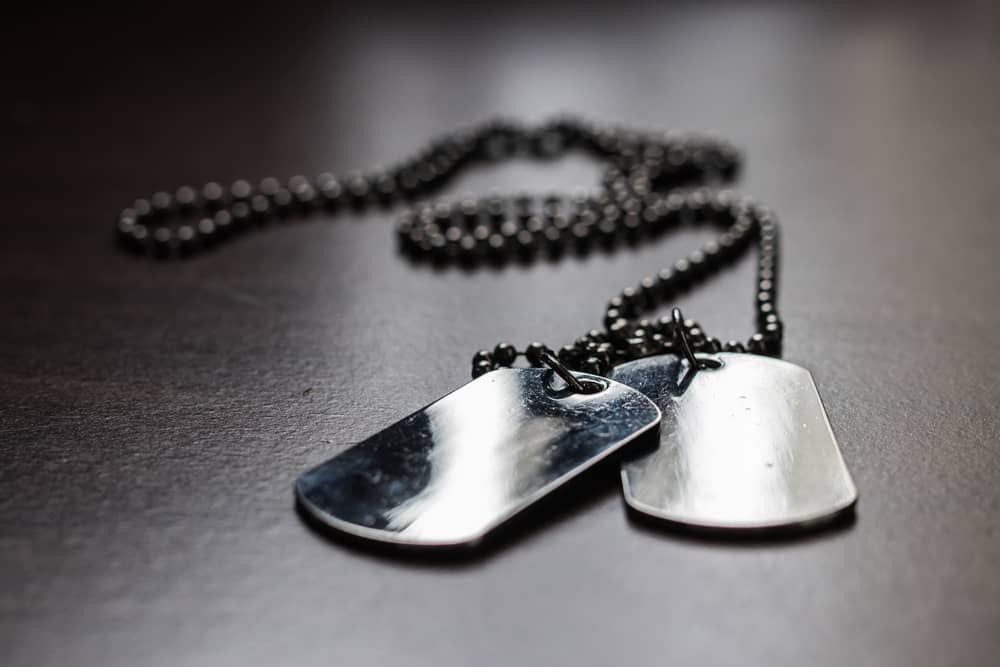
Military dog tags are one of the most recognizable pieces of jewelry in the world. They are two engraved metal plates worn on a chain, which means they are definitely a type of jewelry. But the term “dog tags” is actually far newer than ID tags, which is what they are more officially named.
The nickname
There are a few different urban legends about how U.S. military ID tags came to be called “dog tags.” The Army Historical Foundation says that newspaper mogul Willian Randolph Hearst coined the term in 1936 as a derogatory term to undermine President Franklin D. Roosevelt’s “New Deal,” a policy with which Hearst did not wholly agree.
Another rumor says that servicemen came up with the term during WWII because they said new draftees were treated like dogs. Some say the tags look similar to the tags on a dog’s collar. Hence, dog tags.
History
However, the history of military ID tags goes back much further than the nickname. Tags for the military originated in the Civil War. Soldiers were afraid that if they died, no one would be able to identify their bodies.
They did not want to wind up in unmarked graves and came up with their own solution. Soldiers started marking their own clothing with pinned-on paper tags. Those who could afford it used bits of lead or even copper that were engraved with their names and information.
Some men even used chunks of wood, which they hung around their necks.
Those who could afford the best bought engraved metal tags, which were sold by civilians as a surprise cottage industry that cropped up around the Civil War.
The trend made its mark on history but did not spread far enough through the ranks of the military. By the end of the Civil War, more than 40 percent of the Union Army’s deceased soldiers were unidentified, according to the U.S. Department of Defense.
Style
Military ID tags became official in 1899, at the end of the Spanish-American war. The U.S. Army put out an order in 1906 that all soldiers wear ID tags. Back then, the tags were circular pieces of metal, stamped with the soldier’s name, rank, company and regiment or corps.
In 1916, the order was modified. Now, soldiers were required to also wear a second tag. This second tag would later become part of the soldier’s burial service record.
The tags took on the size and shape they still have today by WWII. Military ID tags are made with an alloy of nickel and copper in a rounded rectangle shape.
Pledge pins
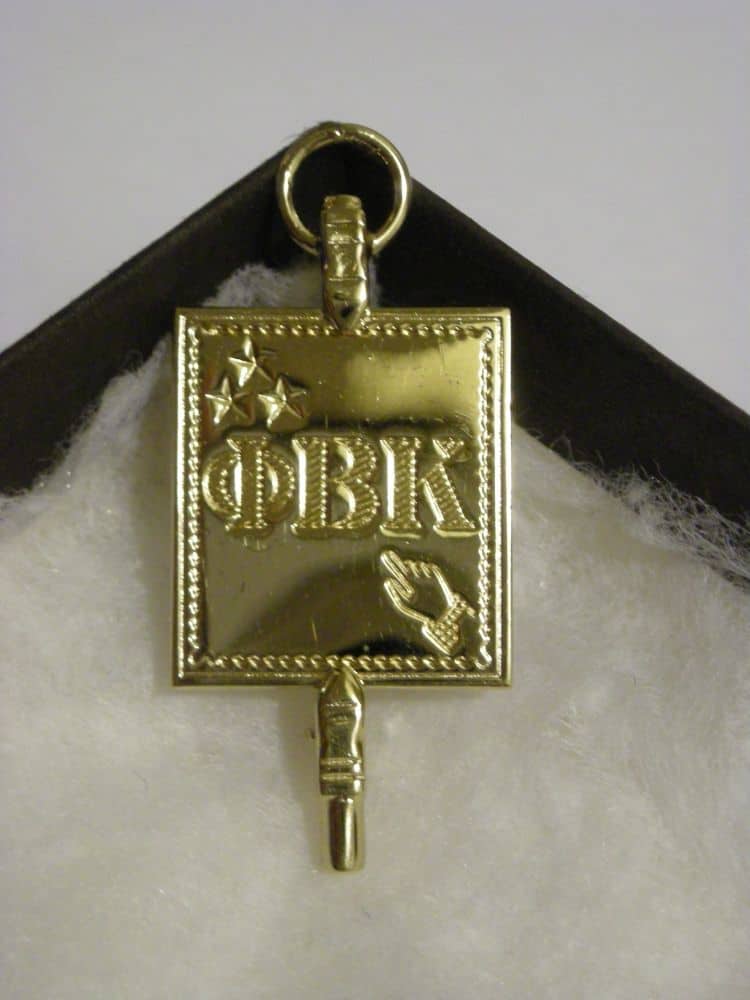
Pledge pins are decorative pins that are specifically worn by students attempting to get into a sorority or a fraternity. These pins are worn constantly during the pledging period. And while you may know that it’s a historic tradition, you may still be shocked to find out just how historic it is.
History
The Phi Beta Kappa Society, founded in 1776, was the first to issue pledge pins. It was a simple silver square with “S.P.” and “December 5th, 1776,” the organization’s founding date, engraved on it. The square of metal also had the Greek letters phi, beta and kappa on it.
Puzzle rings

A type of specialty ring, puzzle rings are said to have originated in Turkey. Puzzle rings are a popular modern fashion choice. They are even used as wedding rings.
History
The origins of the puzzle ring are a bit unclear. However, one popular legend holds that a Turkish king was convinced his wife was being unfaithful. He told the royal jeweler to create a ring that would make it clear if his wife had removed it from her finger.
The jeweler invented the puzzle ring. The design was such that if the ring was removed, it would come apart. The complicated design was difficult to put back together without instructions.
This would clearly reveal the unfaithful wife’s shenanigans.
Style
Though the story may or may not be true, puzzle rings have become known around the world. They are made up of interlocking bands. If the ring is held together when removed, it will stay in place. If not, the puzzle will come undone.
Shoe jewelry
Why should jewelry be restricted to the body only? What’s the next level of wearing jewelry? Putting it on your shoes, of course.
There are actually several different types of shoe jewelry that can be used to dress up your footwear, too.
Shoe clips are made to clip right onto high heels and flats of all types. Shoe clips are often made in floral or abreast designs in bright, sparkling costume jewelry that resembles diamonds and colored gems. However, shoe clips are made with real diamonds and gems for the super fancy.
Shoe clips can also be made in simpler designs as well.
Shoelace charms are made for sneakers. These are long, stylized pieces of jewelry, usually made from base metal that’s plated to look like pure silver or pure gold. These charms are laced right into the shoes to add a bright, eye-catching little detail.
Boot chains and shoe chains are like bracelets for shoes. They go around the ankle of the boot or around your own ankle, but they have dangling chains that add detail to the heels. These chains are made in all sorts of different designs and metal finishes.
Thumb ring

The thumb ring is another very old type of jewelry that dates to the earliest days of mankind. It is believed that the thumb ring began as a practical item for archers. Worn on the thumb, the band of metal protected the hand while firing the bow, a weapon that vastly predates firearms. Some say the thumb ring is also used to denote one’s sexual preference and even availability.
When worn on the left thumb, this person is in a committed relationship. On the right thumb, the person is available and single.
Religious jewelry
Many types of jewelry can be symbolic of religion, such as necklaces that bear specific spiritual emblems.
Japa malas
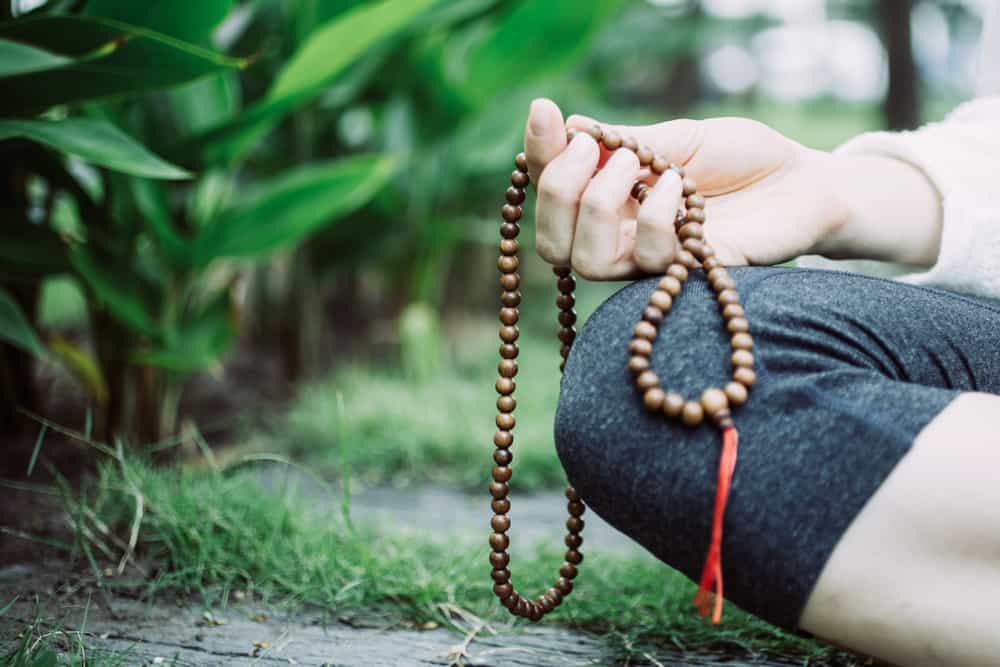
The Japa mala is a string of beads that is used while chanting mantras. These beads are popular throughout India and Asia. They are used by Buddhists, Hindus and Sikhs.
Japa mala beads are very similar to the Catholic rosary.
Proper use
The correct way to use a Japa mala is to hold the beads in the right hand, using the thumb to move from bead to bead. The index finger is not used. The beads are held while a mantra is said.
While holding the beads and chanting, you’re thinking about what the mantra means. A mantra is said for each bead, according to New World Encyclopedia.
Prayer beads
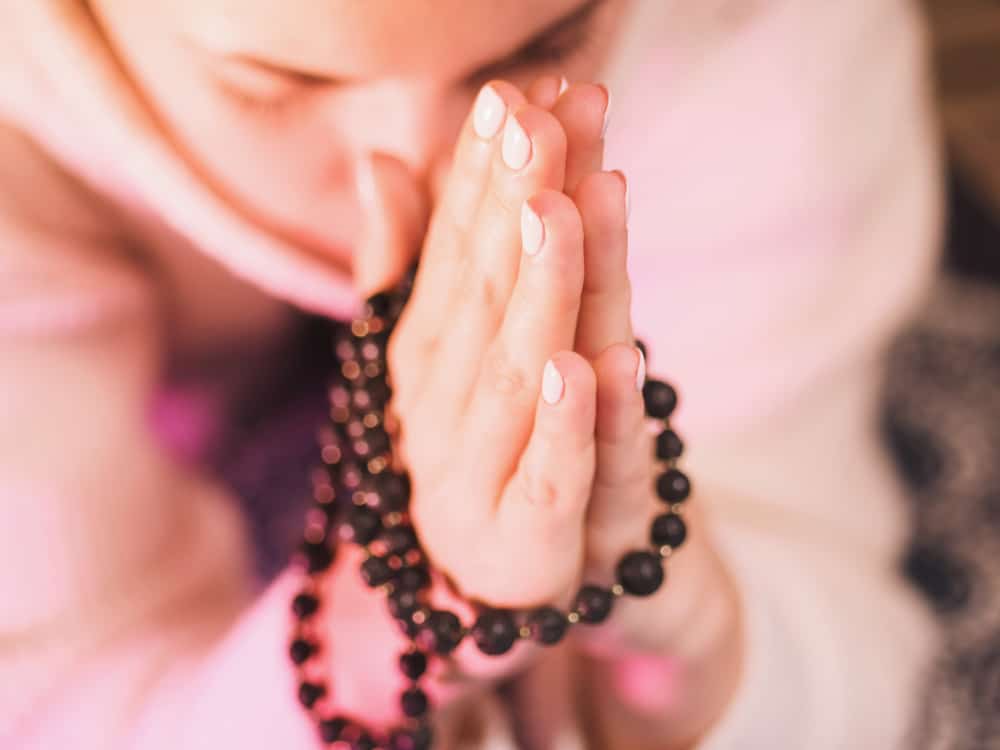
Prayer beads have been used by many cultures and religions around the world. Protestant Christians, Muslims and people of many different faiths use prayer beads, though not as a required practice of their faith and not on a wide basis.
Rosary

According to the official Catholicism website, rosary beads were created by monks and the faithful when they gathered handfuls of pebbles before praying. As they recited prayers, they would toss one away with each new prayer. This evolved into strings of berries, beads, knots and anything else that was easy to make.
Rosaries have become more stylized in the modern era but each bead still represents specific prayers, which are recited in a specific order a certain number of times.
Other
Some jewelry types truly defy definition. They are not quite like other pieces of jewelry and don’t neatly fit into a single category, but they are used to adorn just the same. How often have you worn one of these unusual pieces?
Cameo

The classic cameo is a type of brooch with specific features. The cameo has a raised emblem at its center. The raised emblem, which is commonly a carved face in profile, rests on a flat background and is surrounded by other decorative elements.
History
The cameo has existed since ancient times. In the 400s B.C.E., the ancient Greeks were masters of carving stone into relief designs. They created cameos of the gods and goddesses.
Later, ancient Romans created cameos of popular political figures and public personas, according to Town & Country magazine.
Style
Cameos were popular as religious jewelry in medieval times. However, cameos really hit their stride in the Victorian Era. This is when cameos were truly trendy, must-have items.
Today, cameos are made in a huge variety of styles, from artistic designs to classic looks to modern re-imaginings of what cameos can be. Any person, character, animal or thing can be carved to create a beautiful and meaningful cameo.
Watches
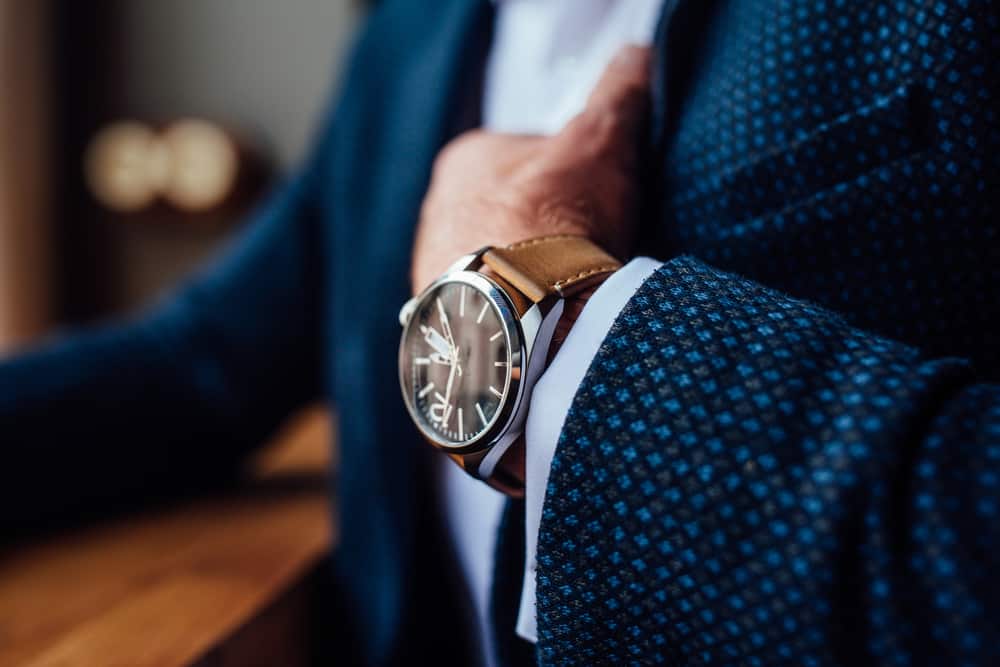
Are watches considered to be jewelry? The short answer is yes. A watch is an ornament you wear on your body that has visual appeal.
Some argue that watches are not jewelry because they are also functional, but any piece of jewelry can also have a function and it’s still jewelry. Even smartwatches, which can perform a huge variety of functions, are considered to be a type of jewelry. Watches are particularly popular in men’s jewelry.
Style
The watch that most people today are familiar with is the wristwatch. But long before people wore timepieces on their wrist, they carried pocket watches. These watches truly were functional jewelry.
They were attached to a vest or waistcoat with a fine chain and they were usually highly embellished.
But in 1916, a new trend was sweeping Europe. According to the Atlantic, the New York Times reported that an odd fashion trend was shaping up: people were wearing bracelets with a clock on them.
It was WWI that made wristwatches a practical mainstream fashion choice. Pocket watches were cumbersome on the battlefield. It was much easier to wear the newer wristwatches.
They very quickly replaced the old pocket watches and now, they’re an extremely popular accessory in men’s fashion in particular.
History
The first watch-like pieces of jewelry were invented sometime in the 1400s. They were attached to clothing and worn around the neck most commonly. It wasn’t until the 1600s that pocket watches became popular, when waistcoats were invented and took the fashion world by storm.
Newer, flatter watch styles made it easy to place a watch inside a small pocket on the waistcoat. This look would remain popular for centuries, until pocket watches were replaced with wristwatches.
Tie Clips

A tie clip is a clothing accessory that is, as the name suggests, traditionally used by men to clip the tie to the shirt front. This prevents it from swinging and ensures that the tie hangs straight. They are usually made of metal and can have embellishments and decorative patterns.
They are also used to signify membership to exclusive groups and are also used as commemorative tokens. They began to gain popularity during the 1920s when ties started getting made with more delicate materials, like silk.
History
The first tie clips were stick pins and tie tacks, which were used to keep ties in place so the wind wouldn’t whirl them around. This was in the 1870s, when ties were made to be very lightweight and wrinkled easily. When the modern tie design was debuted in 1926, more modern tie clips appeared on the market.
Style
Tie clips are deceptively simple. To the untrained eye, they may look relatively the same. However, according to Gentleman’s Gazette, tie clips come in many different styles.
The tie tack is still popular. In highly elegant designs, they may have a diamond or another gem at one end. Often, there is a T-bar and a chain attached to the tack, which keeps it in place.
The tie clip, also known as a tie bar, has two bars with a spring device in the middle. This allows the clip to be squeezed open so that it can then be closed onto the tie. From a simple bar to an elaborate design, tie clips are made in a huge variety of styles.
They may be engraved with initials or a special message.
The tie chain has a clip on one end that attaches behind the tie onto the shirt. Usually, tie chains have a decorative fob that may be a gem, a special emblem or any decorative element.
FAQs
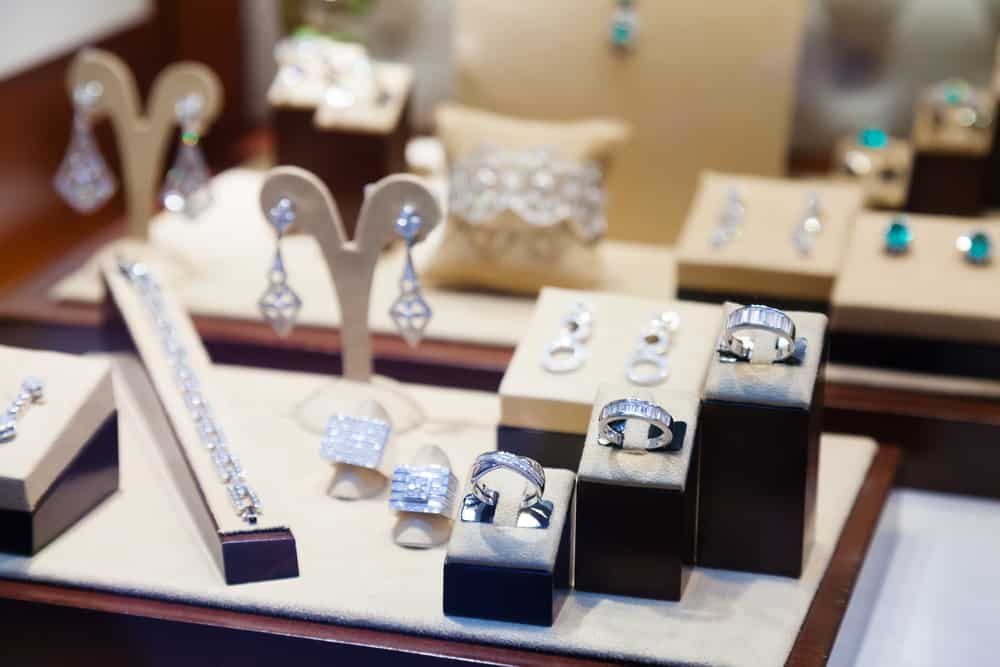
There’s still a lot to know about jewelry and there’s always something changing in the world of style. Get the answers to the most frequently asked jewelry questions and you’ll know how to follow the trends, how to wear the classics and how to make wearing jewelry look great on you.
How many types of jewelry are there?
Jewelry was one of the first items that humans ever invented. Even before permanent buildings were created, jewelry was being used to beautify the body. Ever since then, designers and fashionable people of all types have been looking for new ways to display jewelry. They succeed every day.
There’s always something new on the fashion scene and jewelry is constantly being re-imagined. It’s impossible to know how many types of jewelry there are at any moment because somewhere, someone is experimenting with something new.
Which types of jewelry don’t tarnish?
Everyone has had a favorite piece that turned brown and weird-looking because of tarnish. Any type of jewelry can tarnish because of what it’s made out of. It’s not jewelry that tarnishes but certain metals.
If you want tarnish-free jewelry, you need to focus on finding jewelry made from metal that won’t tarnish.
Gold does not tarnish, which is why it’s so popular in jewelry already. Gold also doesn’t corrode and it’s highly resistant to chemical damage. Various types of gold jewelry will not tarnish unless the finish is damaged.
For example, gold vermeil is made with a sterling silver base that has a coating of gold over it. The gold coating must be 10k and at least 2.5 microns thick, according to the Spruce Crafts.
Silver does tarnish. This is why you hear about people “polishing silver.” Over time, silver reacts to the elements that are in the air. This creates tarnish.
When stored in protective pouches, silver will tarnish much less but it will still tarnish over time. However, it is very easy to polish the tarnish away. There are many types of silver polish on the market made for this.
More jewelry is being made with Argentium silver in recent designs. Argentium silver has more pure silver content than sterling silver. It’s also a bit more white in color and has more resistance to tarnish than sterling.
Platinum, which has become more popular in jewelry-making in recent years, does not tarnish. It is also a highly shiny metal, which makes it a great inspiration for jewelry design. Platinum does not oxidize and stays looking pretty for a long, long time.
White gold was created to imitate platinum. White gold is typically comprised of 75 percent gold and 25 percent nickel and zinc.
Some lesser-known metals that resist tarnish include palladium, which looks a great deal like platinum. It has a sort of white-silver shine to it. This metal has started to become more popular in wedding ring design.
Titanium, known for being highly durable and tarnish-resistant, is a more affordable alternative to platinum. Titanium doesn’t scratch but it’s very lightweight and easy to wear, which makes it a great jewelry choice. Titanium rings have become very popular in modern fashion because they’re so durable.
Other metals that don’t tarnish include tungsten carbide, tantalum, cobalt, stainless steel and carbon fiber, according to Wedding Know How.
How should jewelry be cleaned?
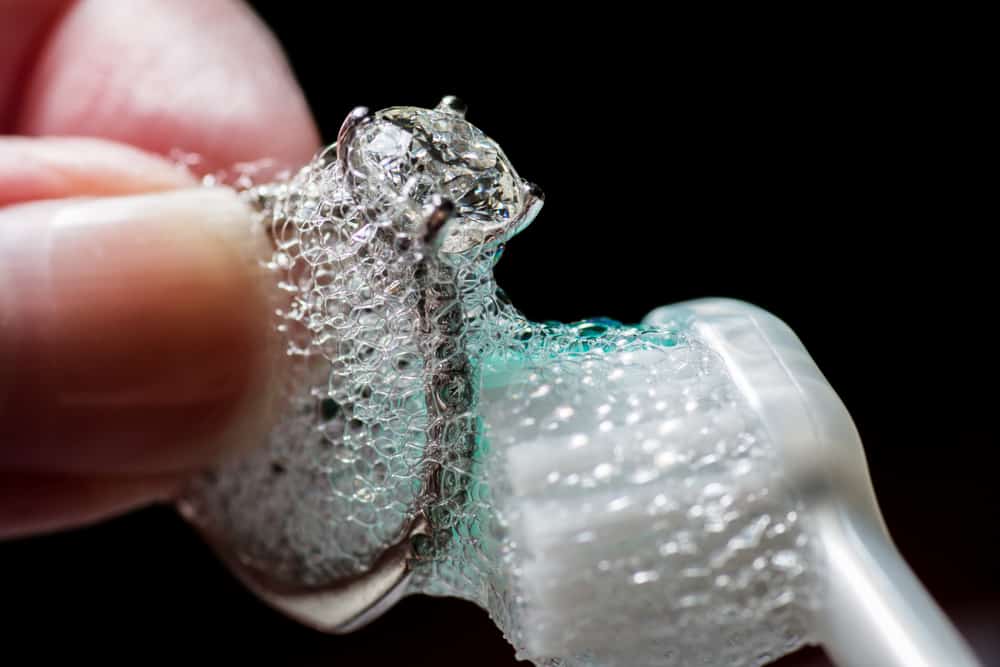
What’s the proper way to clean jewelry, anyway? Can you clean jewelry with alcohol? Can jewelry be cleaned with hydrogen peroxide?
All jewelry should be cleaned with care. Using the wrong method or products on jewelry can seriously damage it. Pearls, cameos and jewelry made with delicate gems and materials must be handled with care.
The best way to clean your most delicate jewelry is to use lukewarm water, a soft-bristle toothbrush and very mild dish detergent. Use only a little detergent and dilute it in the water. “A little” means very little, about one drop per large bowl of water.
Jewelry that does not have gemstones can be soaked in the solution for a few moments, according to domestic expert Martha Stewart.
Next, use the brush to gently polish off all the dirt and grime. If your jewelry has gems, dip the toothbrush in the solution and use the brush to gently clean the metal around the gem.
Then, delicately wipe off the gem using a cloth that has been dampened by the solution and immediately use a cloth with plain water on it to wipe it clean. Finally, use a dry, soft cloth to dry off the jewelry completely.
If the setting around your gemstone looks grimy, try adding a little seltzer water to your cleaning solution and gently polish the gem with the toothbrush dipped in this solution. Clean it with your plain water cloth, dry it and see the difference.
Use silver polish and a cloth to clean silver jewelry and remove tarnish.
Rose gold gets its color from copper, which is mixed with gold in order to create that pinkish hue. This patina is what sets rose gold apart, so you actually don’t want to polish it away. Keep it clean with vinegar or mild soap.
White gold has been mixed with other metals, such as palladium. It’s also usually plated with rhodium. It can darken over time but it can be cleaned with mild soap and water.
Which types of jewelry can anyone learn to make?
Have you been bitten by the DIY bug? Do you want to learn how to make your own jewelry? It’s actually pretty simple to start learning how to make unique jewelry.
There are many craft stores and online stores where you can get basic materials, such as necklace clasps and bracelet closures, along with strong cordage that can serve as the base for any handmade jewelry project. Add beads, shells with holes drilled in them and any other ornaments you like. You can find plenty of beads and other materials to put on a necklace or a bracelet at the craft store, too.
A similar process can be done for earrings. A variety of different earring bases, both pierced and non-pierced versions, are also sold at craft stores. Play around with making stud earrings or dangle earrings with these standard bases.
As you get more comfortable with the process of making jewelry, you may want to start experimenting with even more techniques. You can try all sorts of different ways to DIY jewelry, such as macrame, weaving, even metalworking if you’re feeling bold. Jump rings are small metal rings that are used to make all sorts of different jewelry.
These little rings are a good starting point if you want to begin working with metal jewelry. Jump ring designs are a good way to start easing into more advanced techniques.
There are a number of in-person and online workshops where you can learn specific jewelry-making techniques, including things like glass-blowing and welding. There’s no limit to what you can learn if you start with the basics and keep practicing. With a little work and a little practice, anyone can be a jewelry maker.
What are the different types of jewelry clasps?
The sheer number of ways to fasten jewelry are just as numerous as jewelry types themselves. It can be pretty confusing when you don’t know the difference between a toggle clasp, a lobster clasp, a hook clasp, barrel clasp or any other strange-sounding type of jewelry clasp. There’s even one called a fishhook clasp.
You’re more familiar with many of these than you may think. You probably just don’t the right names for all the different clasps. Once you get to know more about clasps, you’ll know which ones you prefer.
What are the different types of jewelry engraving?
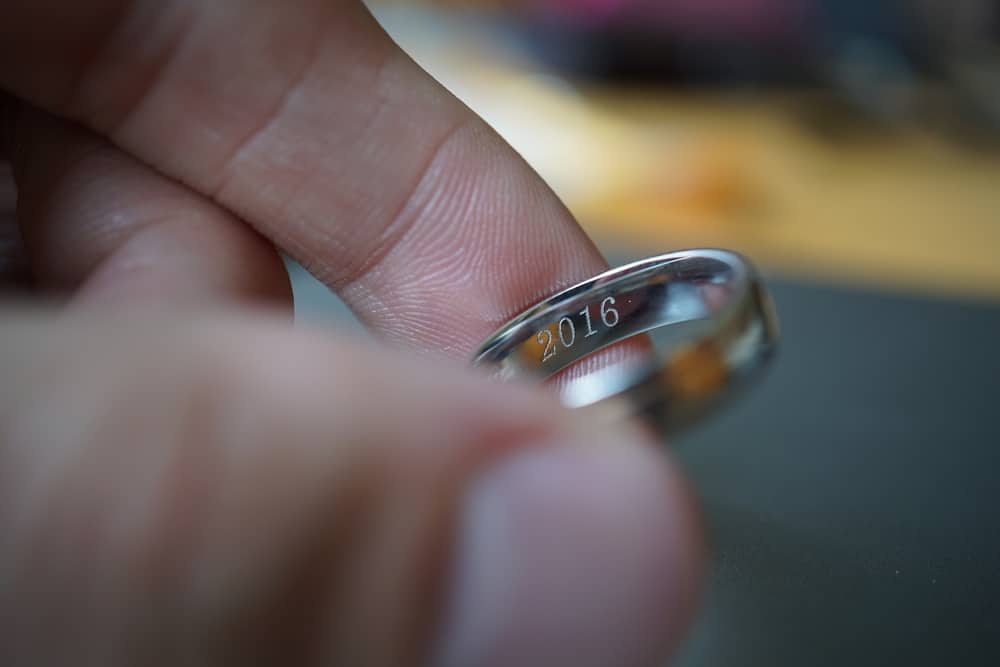
Engraving jewelry is an ancient practice. Various symbols, letters and dates have been carved, or engraved, onto jewelry for thousands of years. But in the modern era, engraving is done by different machines.
A mechanical engraving machine transfers a design from a stencil onto the jewelry.
Laser engraving machines are very modern and they have become highly popular. As the name suggests, the laser does all the work here. It takes a computer to properly operate this complicated device.
Because lasers can pretty much perfectly copy any pattern, they’re used very frequently for more complex engraved designs.
Photo engraving machines can be used to engrave photographic images right onto jewelry. Though this sounds pretty high-tech and complicated, the process is actually quick.
Which types of metal and stones are most commonly used to make jewelry?
Jewelry is made from all kinds of different materials. Throughout history, jewelry has been pretty much made with everything that humankind has ever used. That includes bones, shells, plastic, wood and of course, precious metals like pure gold and fine silver.
Various items have been used to decorate jewelry, from simple river pebbles to great, gleaming rare gemstones. But what are the most commonly used types of metal and stones that are used to make different types of jewelry?
Gold, silver, platinum and palladium are very popular in jewelry. These metals have been used for many, many years to create all sorts of jewelry. Stainless steel, a more modern metal, is being seen in jewelry design more and more.
Industrial metals like tungsten carbide and titanium are beginning to grow in popularity because they’re extremely durable and scratch-resistant.
Many different types of gemstones are used for jewelry. Diamonds are seen all the time, of course, but pearls are also pretty ubiquitous. Other precious and semi-precious stones that appear in jewelry all the time include amethyst, emerald, ruby, sapphire and turquoise.
Which types of jewelry don’t rust?
Many types of metals are resistant to corrosion, which means they will not rust. Stainless steel is well known for being rust-resistant. Aluminum and titanium alloys are also corrosion-resistant, as are gold and platinum.
All of these metals can be used to make jewelry.
Which is correct: jewelry or jewellery?
If you’re a perfectionist, the spelling of these pretty body ornaments might annoy you horribly. Which spelling is the right spelling? Is it jewellery or is it jewelry?
Well, that depends on where you are in the world. The American spelling is jewelry. In British English, the spelling is jewellery.
For example, the President of the United States wears jewelry. The Queen of England wears jewellery.
Jewellery is one of many words that will tell you if the writer of a piece is using British or American English, which have developed different words and slang for many everyday objects. In this case, only the spelling of the word jewellery is a variation. The word still means the same thing in both languages.
The spelling jewellery is seen everywhere outside the U.S. that uses English, including Australia. The spelling jewellery is even used in Canada.
Can you wear jewelry through airport security?
Going through security at the airport has become a pretty stressful experience. There are a lot of items you can’t bring and a ton of rules to follow. But for the most part, you can wear your jewelry through security with no trouble.
You are also allowed to carry jewelry with you in your luggage, though the TSA recommends that you keep jewelry in carry-on bags, rather than in checked luggage, so it can remain with you at all times.
However, very large pieces containing lots of metal may be deemed unacceptable. You may be asked to put very large pieces in your carry-on bags.
How do jewelry stores resize rings?
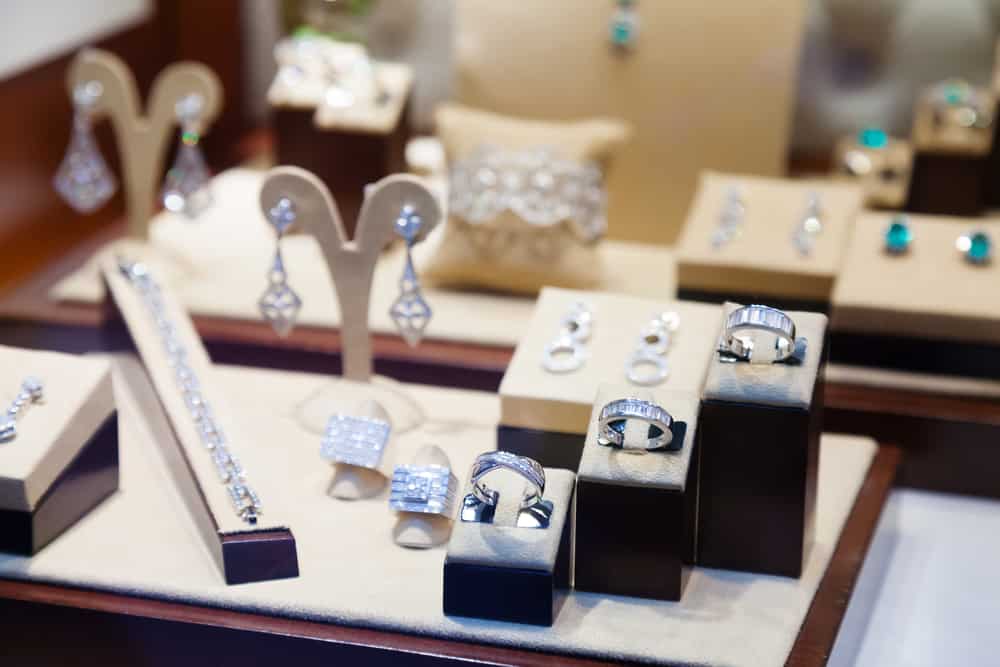
It is very common for rings to not fit perfectly when you buy them, because many rings available for purchase are made in just a few standard sizes. Jewelers can resize rings to make them bigger or smaller.
To make a ring smaller, the jeweler cuts a piece out of the band, forms it into a circle and then solders the band back together. The result is a smooth, even finish.
To make a ring larger, the jeweler cuts the band and slides in an extra piece of metal. This is then soldered into a smooth band.
How do jewelry appraisals work?
There are many reasons why you may need to have jewelry appraised. Start by looking for accredited appraisers through a group like the National Association of Jewelry Appraisers. Look online to find an appraiser in your local area.
Once you do, you’ll probably need to call to schedule an appointment.
Jewelry appraisers charge for their services. If you have a specialty jewelry item, such as an antique piece, you will want to look specifically for an appraiser who has experience and knowledge with this type of jewelry.
Should you get jewelry insurance?
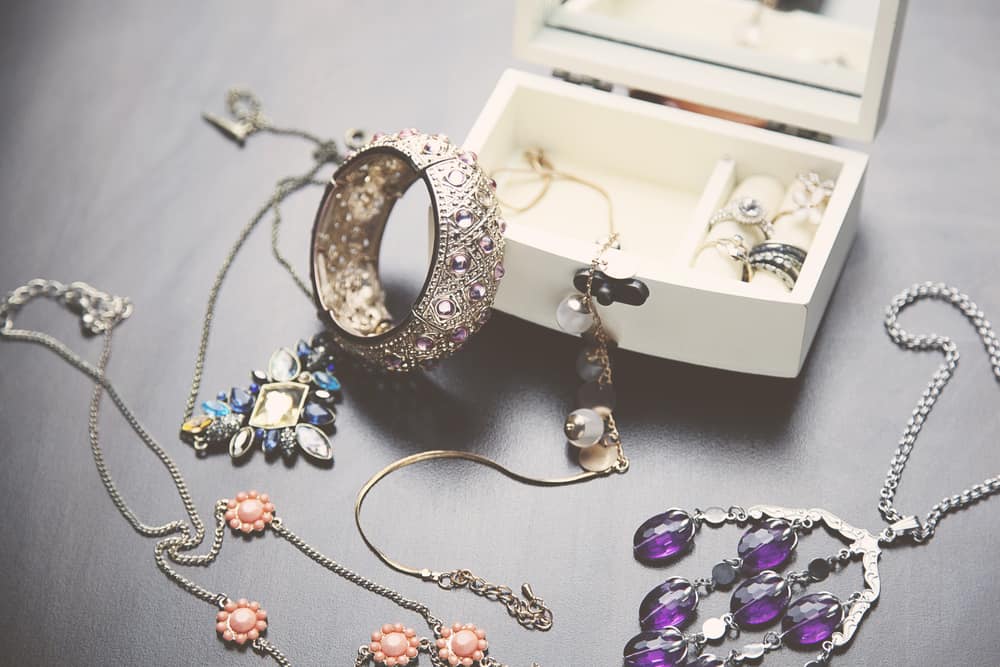
Do you need jewelry insurance? The answer sort of depends on several factors. If you have homeowners or renters insurance, the policy will cover your jewelry as part of the value of your home.
However, many policies only insure jewelry up to a specific dollar amount. You want to find out what that amount is, because you may decide that you need an additional policy to cover the value of your jewelry if the coverage does not go far enough.
You can get more coverage for your jewelry with a “floater” tacked onto the policy, which will add additional coverage. But if you don’t have a homeowner’s or renter’s insurance policy at all, you can purchase separate jewelry insurance. Many insurance companies provide jewelry insurance, or you may be able to purchase it through the jewelry store where you purchased your items.
Don’t forget about other jewelry items you may own besides your wedding ring and engagement ring. Maybe you have your grandmother’s string of pearls tucked away, or a precious jewelry item from another relative. Calculate the value of these items and make sure any insurance policies you have cover the value of all your jewelry.
It’s a good idea to make a list of all your jewelry items so you know and remember what you have.
Which jewelry turns skin green?
If your skin turns green after you’ve been wearing a piece of jewelry, there’s no need for alarm. This is a natural reaction to copper, a metal that can often be found in rings. It’s used in all types of jewelry.
You don’t have to get rid of the jewelry. There are ways to keep your skin from turning green. Paint the inside of rings with clear nail polish.
You can do this to earrings, necklaces and bracelets where they come into contact with your skin, too. You will have to reapply this layer of protection periodically, but this will work nicely to prevent any greenness on your skin.
You should also avoid wearing this jewelry while you’re swimming, washing your hands or putting on lotion.
Green is most commonly associated with jewelry turning your skin a different color. However, some types of jewelry may turn your skin black or red. Silver tarnishes when exposed to air, which can transfer a black mark onto your skin.
This is why your favorite sterling silver ring might leave a black mark on your skin at the end of the night. This can be washed away and silver can be polished to get rid of the tarnish. Jewelry made with nickel may cause an allergic reaction in your skin that turns the skin red.
Your skin may also become inflamed where it came into contact with nickel jewelry.
How should jewelry be stored?

If you store jewelry improperly, you could actually do damage to it. Necklaces and earrings can become tangled, but that’s the least of it. You can also cause jewelry to tarnish and even corrode.
Storing jewelry properly will keep it looking beautiful. Whether your jewelry is pricey or inexpensive, take a few extra steps to keep it looking nice so you can wear it whenever you want and enjoy having it.
Another bonus of properly storing your jewelry: it will be easier for you to find and see the pieces you own, so you don’t forget what you’ve got!
Hang your necklaces. Lots of jewelry storage devices have hooks for hanging necklaces but you can DIY your own anytime. Get a corkboard and add some thumbtacks or screw-in hooks and you can hang all your necklaces here.
Store your other jewelry in fabric-lined storage compartments. You don’t want your jewelry to be damaged in a hard plastic, wooden or metal box. You need a fabric-lined place to store your jewelry that will be soft and gentle for all your items.
Store one item per compartment in your jewelry box, rather than piling it together. If you don’t have enough room, get another jewelry box! Crowding jewelry together can cause pieces to get scratched and damaged.
There’s another good reason you shouldn’t be stacking jewelry together: it can cause a negative reaction. Copper jewelry can become rusted and corroded. If you store this right next to another piece of jewelry, it can actually cause that other piece of jewelry to tarnish and/or corrode as well.
No matter what you do, keep diamonds and gemstones separate from other jewelry. Always store your jewelry with gems in its own boxes, drawers or compartments. Diamonds are the hardest gemstone you can buy.
That means it’s hard enough to scratch anything, even other gemstones. If you throw your diamond earrings in with your pearl necklace, you can cause considerable damage to the pearls. Sapphires are also very hard, as are many other gems.
Play it safe and keep these items in their own separate little spots, rather than allowing them to stack with other jewelry.
Silver jewelry should actually be stored in felt jewelry bags. This will help prevent tarnish that happens to silver jewelry naturally. You don’t want to prevent air from getting to the jewelry entirely, but you’re preventing moisture from causing it to tarnish faster.
You can even put one of those silica packets that come with purses in with silver jewelry to absorb moisture and further slow down the tarnishing process, according to the Spruce.
If you have very expensive pieces, such as fine jewelry, the best way to store these items is inside a jewelry box in a locked location. A safe is optimal, but a fireproof lockbox that is cleverly hidden will do in a pinch. Home theft can happen, along with other disasters, so you will want to do what you can to protect your most expensive items.
Also, make sure you get jewelry insurance to insure these super expensive pieces.
Is jewelry a good investment or a bad investment?
Through the ages, jewelry has been used as an investment. But is it even a good one? With jewelry, the answer to every question almost always starts the same way: it depends.
If you’re using jewelry as an investment into gold, many experts agree that this is not a great choice. There are much better ways to invest in gold, rather than using jewelry.
However, jewelry can be a good investment. After all, there’s a reason that wealthy people pass down their jewelry from generation to generation. Some jewelry, like those belonging to the royal family, is even put on display in museums. Clearly, jewelry can have a great deal of value.
But like any other type of investment, jewelry is tricky. Only rare pieces retain a lot of value through the years and jewelry is always going to be a long-term investment. As trends in design come and go and as market value for precious metals and gemstones fluctuate, the worth of jewelry fluctuates and goes up and down.
If you’re going to invest in jewelry, learn more about it. Learn which jewelers are known for creating prized pieces, study jewelry trends and find out which antique and vintage pieces have high resale value. Even costume jewelry can be valuable, depending on who it’s made by and how it’s made.
If you focus on collecting unique, high-value jewelry items over a long period of time and keep those pieces in beautiful condition for many years, you will end up with a valuable investment. Jewelry as an investment can be very worthwhile but it takes a lot of time and a lot of knowledge about jewelry if it’s ever going to pay off.
Which jewelry metal is the most expensive?
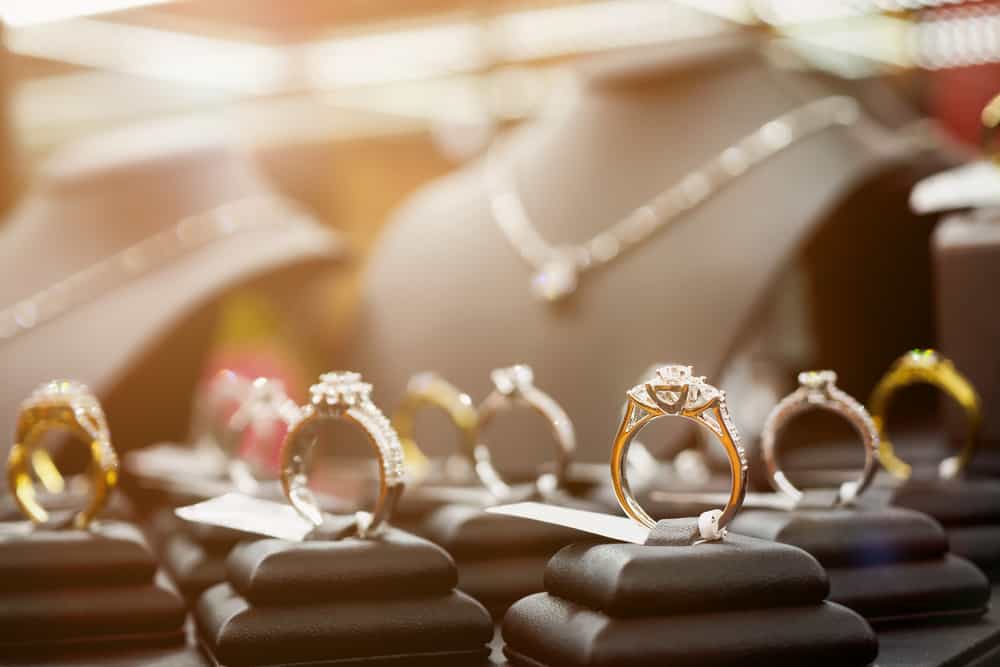
Metals are a commodity, which means they are bought and sold around the world. Like everything else on the market, the price of metal fluctuates due to many different factors. Certain metals may suddenly catch on and become popular in jewelry-making, which can make the price go up. Some natural event could occur that makes it more difficult to mine a specific metal, which will make the price go up.
Alternately, the market can suddenly become flooded with an influx of a certain type of metal. This will make the price go down. Like the stock market, the commodities market goes up and down.
In other words, the price of metal fluctuates greatly. However, some metals are almost always valuable when compared to others. On the precious metal market, gold, silver, platinum and palladium are extremely popular commodities.
The price for an ounce of gold or platinum was over $1,000 per ounce recently, while the price of palladium was more than $2,000 per ounce.
These four metals are often used in jewelry making and they are considered to have some intrinsic value. However, this value is still subject to market fluctuations. Other expensive metals, according to Brides.com, include titanium and tungsten.
Rhodium is said to be the most expensive metal in the world. It is a type of platinum and it’s the rarest metal in the world. Rhodium is highly resistant to corrosion, extremely shiny and doesn’t tarnish.
Jewelry is rarely made with rhodium, though it is used as a jewelry plating because it’s so highly resistant to tarnishing and so beautiful.
Which types of jewelry can be worn in water?
Most jewelry and water don’t really mix. Wearing some jewelry in water can cause it to tarnish and/or corrode, so you want to exercise caution. Gold and platinum, however, are resistant to water.
If you wear this jewelry to the beach, wash it gently with a mild soap at the end of the day to remove any salt.
The type of water you’re going into affects your jewelry choices. For example, gems like pearls and coral resist corrosion from saltwater. If you’re swimming in the ocean, this type of jewelry should be safe.
However, these gems are highly susceptible to damage from chlorine. So if you’re swimming in a pool, you want to avoid them.
Softer precious gems such as emeralds, turquoise and opal may become discolored in chlorinated water. Diamonds, rubies and sapphires are far more resistant to chlorine, according to Town & Country.
Which types of jewelry can you sweat in?
You can still look stylish even if you’re working out. There are lots of reasons why you could get sweaty in your jewelry. So will that damage your jewelry?
If you’re wearing gold or sterling silver, no. Silver can tarnish, especially when exposed to moisture, so you may notice a little darkening on the metal and/or on your skin if you sweat in silver jewelry. However, this can be polished away.
Nickel, brass and copper can corrode when exposed to your sweat, which can ultimately damage the jewelry. Even gold-plated jewelry can corrode due to sweat, according to Shape.
If you accidentally sweat in your jewelry, clean it gently with a mild soap when you can. Rinse and dry it completely.
What types of jewelry are trendy now?
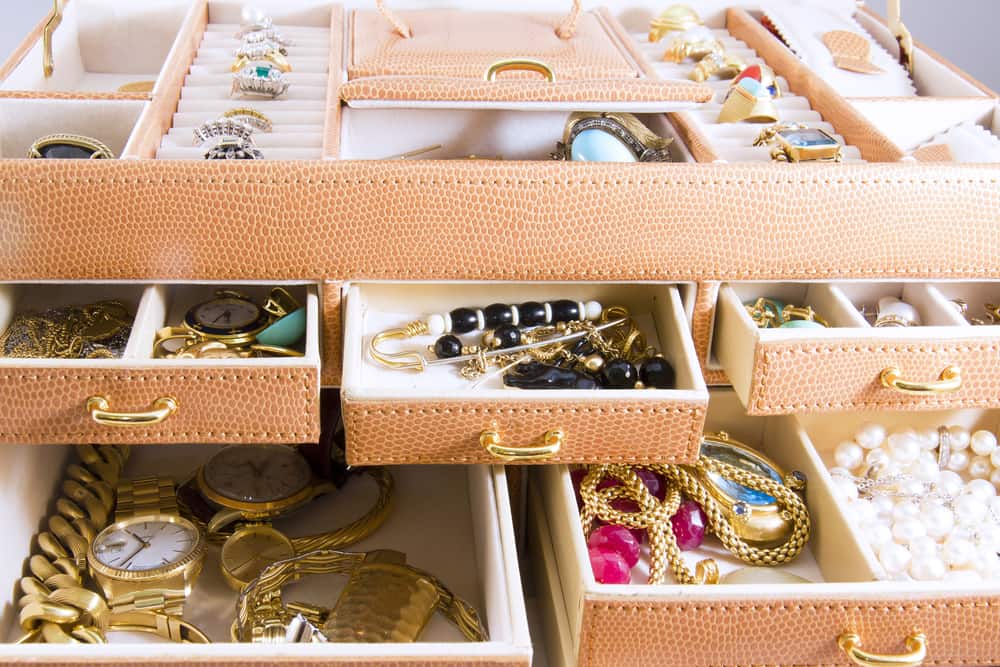
Statement jewelry has been making a splash on the style scene lately. Big necklaces and big earrings, though never worn together, are very hot in fashion. To keep up with what’s trendy in jewelry, follow A-list celebs and known fashionistas on social media.
Trendsetters will post pics of themselves wearing the latest jewelry looks, so you’ll know whether hoop earrings, pendant necklaces, chokers or bangles are the hottest on the style scene.
What do different jewelry markings mean?
Look closely and you will see that many of your pieces of jewelry have markings on them. On rings, you’ll find this inside the band. Bracelets, earrings, necklaces and other types of jewelry may also have markings. Each one has a specific meaning.
If you see a number with a lowercase “k” next to it, you are holding a piece of gold jewelry. The “k” stands for karat and the number is the karat you have. For example, 10k is 10-karat gold.
The color of the gold doesn’t guarantee a specific karat. For example, yellow gold can be 10k, 14k and so on.
The letters “GF” indicate the piece is gold-filled. It’s called gold filled jewelry. This means there is a sheet of gold on the surface of the metal.
This is not the same as gold-plated metal, with has a coating of gold over another type of metal. The word “vermeil” indicates sterling silver that has gold plating. The gold plate will have an engraving indicating its karat.
If you see “.925” or “925,” the jewelry is sterling silver. The marking indicates that it is 92.5 percent silver metal, which qualifies it as sterling.
The word “plat” indicates that the item is made of at least 95 percent platinum, while “pall” means it is comprised of 95 percent palladium.
Some jewelers also add maker’s marks to their pieces. There are thousands of these different marks, which you can find online. Sometimes, there are patents stamped on pieces of jewelry as well.
This will be a number, which is the actual patent number of the piece. You can look these up through the Patent Office.
There may also be dates and/or monograms engraved on jewelry, added after jewelry has been manufactured to represent an important event.
When is jewelry considered vintage?
Jewelry must be at least 20 years old to be vintage. Once it starts to get much older than this, however, it stops being vintage and becomes an antique. Any jewelry that is 100 years old or more is classified as antique.
Any jewelry that is not brand-new is considered “estate” jewelry.
What is the most popular type of jewelry?
If you’re wondering what the most popular type of jewelry is right now, that answer is always changing. New trends are always catching on and styles come and go. What’s hot today may not be tomorrow.
But if you’re wondering what the most popular and most worn type of jewelry in history is, the answer is probably the ring. Throughout history, rings have been used as a symbol of power, marriage, office and rank.
They have been used as personal seals for important documents, to celebrate championship wins, to show membership to a certain school or organization. They are worn for fashion, function and to convey specific messages. They’ve been worn by kings and queens and regular folks as well.
They’re also one of the oldest types of jewelry ever worn, which has given them plenty of time to gain a reputation.
Can the metal be reconditioned to make your jewelry look like new?
If the metal on your jewelry is dull or discolored, sometimes it only needs a good cleaning. Gently polish metal using a solution of very mild liquid soap and water. Do not use baking soda, brushes or anything else abrasive on gold, as this will cause damage.
Do not use anything other than silver polish on silver.
If a good cleaning doesn’t do the trick, you may need to have your jewelry professionally cleaned and polished. This can restore a lot of luster and beauty. If the plating has come off jewelry, a jeweler will have to reapply this.
What qualifies as a statement necklace?

A statement necklace is meant to be the focal point of the outfit. This means that it is eye-catching. Perhaps it is unusual, or large, or highly colorful.
It may be glittery. But whatever it is, it’s always interesting and it draws the eye. This is a necklace that makes a fashion statement all on its own.
Is antique gold worth more?
Once a piece of jewelry is more than 100 years old, it is officially an antique. Does this mean it’s automatically valuable? Not always.
While anything antique is certainly interesting, it may not be worth much more than standard market value. Being old doesn’t necessarily make something valuable. However, some pieces of jewelry do become more valuable as they get older.
If you have questions about a specific piece of jewelry, you can always get an appraisal to determine its true worth.
Are pearls still in style?
Pearls are known as the “Queen of Gems,” according to PBS. They have been worn since ancient times by some of the most powerful and lavish personalities throughout history. Pearls were once among the rarest and most valuable gems in the world.
One story from ancient Rome tells how a Roman general sold a single one of his mother’s pearl earrings to finance a complete military campaign. Another historic legend says that Cleopatra, Queen of Egypt, dissolved a costly pearl in vinegar in front of Roman Marcus Aurelius to display her enormous wealth and power.
But are they still trendy today or have they become old-fashioned? Just look to the world’s style inspirations for the answer. The most elegant women in the world, the royals, wear pearls all the time.
A-list celebrities are often seen wearing pearls and the highest-ranking female politicians are also seen wearing pearl jewelry constantly.
Pearls are still used to make jewelry and to decorate clothing, accessories and shoes. In other words, yes! Pearls will always be in style.
They are considered to be the quintessential gem of elegance and grace, sophistication and simplicity. It’s said that pearls can be worn with absolutely anything, from workout clothing to the most elegant gown. That will always be true. Because after all, this is the Queen of Gems.
What makes amethyst jewelry so unique?
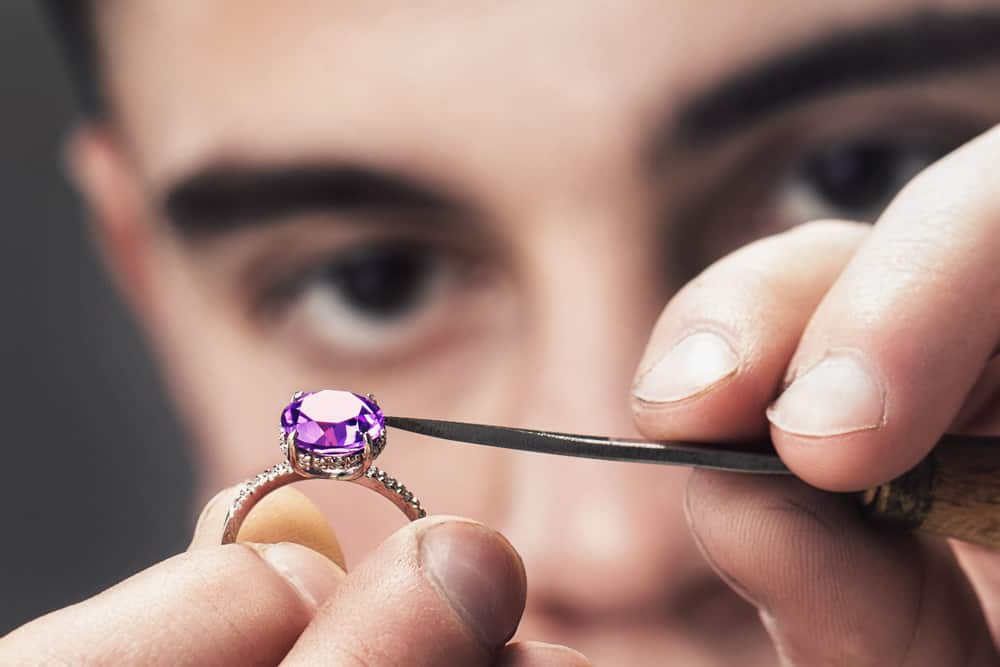
Amethyst jewelry has a pretty long association with human history. Ancient Egyptians carved amethysts into amulets and many ancient people wore these gems in their jewelry. Amethyst stands out for its purple color and the fact that it’s a highly shiny stone.
In almost any kind of gem cut, amethyst is bright and shiny and the color remains vivid.
Amethysts can also change color when heat is applied. The stone can turn green, blue, yellow or deep orange, which turns the amethyst into a citrine.
These gems are versatile because amethysts can serve as the central stone in a piece of jewelry or be used to create accents to the main stone.
Amethyst is actually a type of quartz that is relatively plentiful and pretty affordable, compared to other gems. Because amethyst has such a lovely color and brilliant shine, it looks more expensive than it actually is.
The word “amethyst” is taken from an ancient Greek word that means “not drunk.” This is because ancient Greeks believed you could drink all night long without getting drunk as long as you had an amethyst in your mouth. This is definitely something you should not try!
What are the noble metals?
A metal that is “noble” isn’t exactly more chivalrous than other metals. This is simply a classification used on the periodic table of elements, which using groups of metals, liquids and gases to make it easier to classify and catalog the world’s known elements. The noble metal group is comprised of ruthenium, rhodium, palladium, silver, osmium, iridium, platinum and gold.
Without silver and gold, the rest of the group is known as platinum metals. The noble metals are widely used in many industries, including electrical, marine, aviation, chemical and petroleum.
References:
Gemporia: A Brief History of Earrings
International Gem Society: Early History of Jewelry: Ancient Times to the 17th Century
International Gem Society: Jewelry Metals 101: Gold, Silver, and Platinum
Jewelers of America: Jewelry Repair Guide
Love to Know: Hair Accessories as Fashion Statements
University of Tennessee Chattanooga: Traditional Jewelry of India
Wedding Know How: Top 13 Types of Necklace Chains (and How to Choose the Right One)

